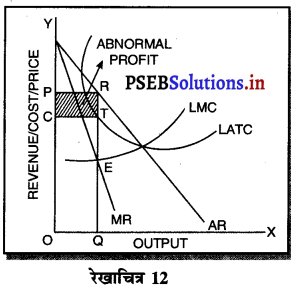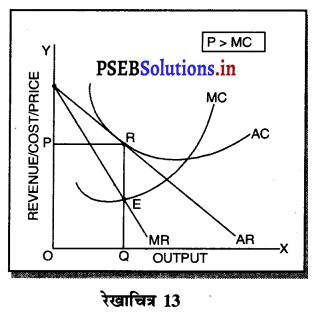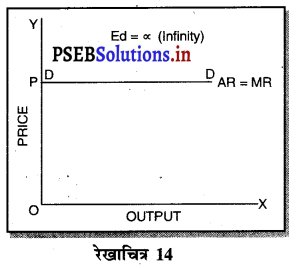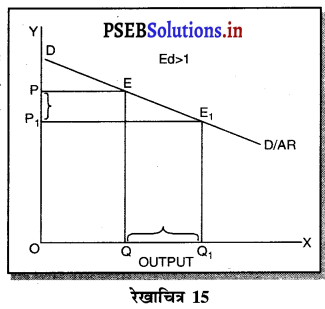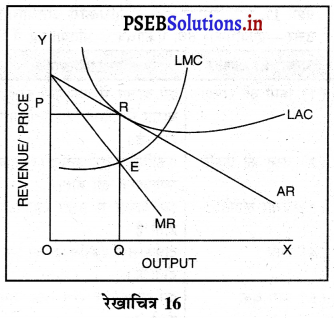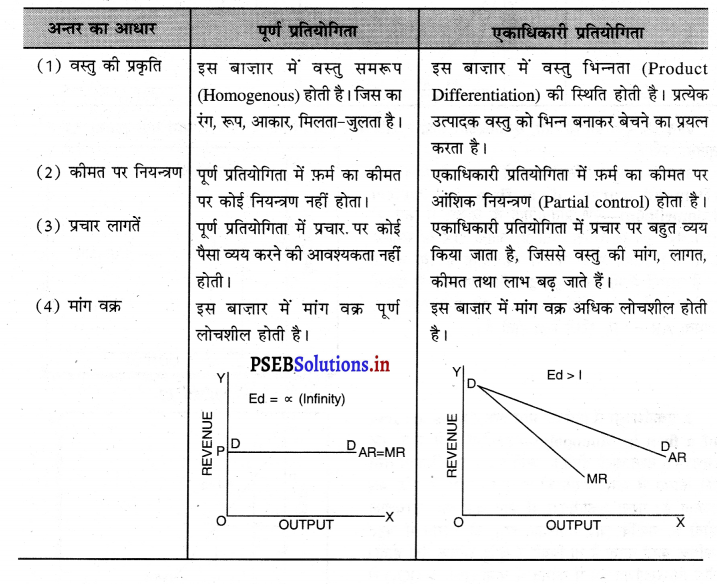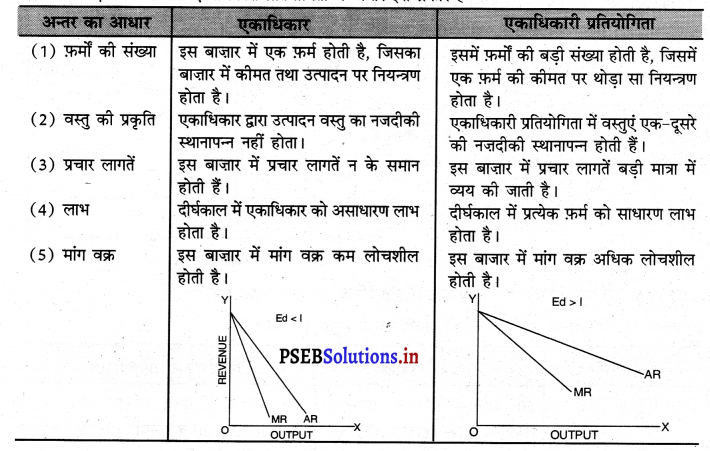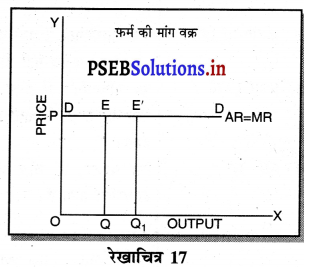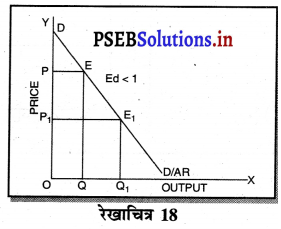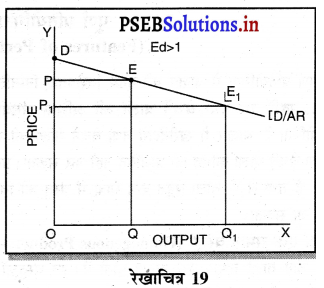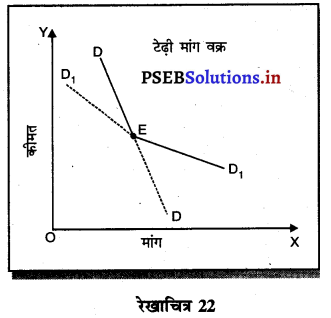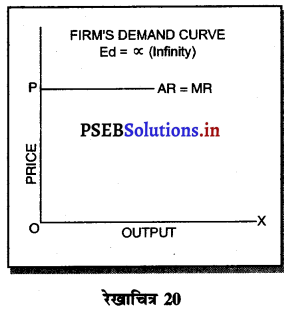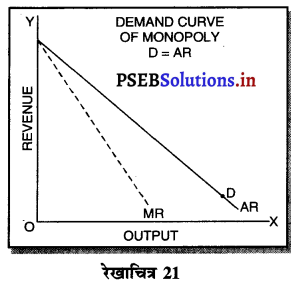Punjab State Board PSEB 11th Class Economics Book Solutions Chapter 15 प्राथमिक तथा द्वितीयक आंकड़े Textbook Exercise Questions, and Answers.
PSEB Solutions for Class 11 Economics Chapter 15 प्राथमिक तथा द्वितीयक आंकड़े
PSEB 11th Class Economics प्राथमिक तथा द्वितीयक आंकड़े Textbook Questions and Answers
I. वस्तुनिष्ठ प्रश्न (Objective Type Questions)
प्रश्न 1.
प्राथमिक आंकड़ों तथा द्वितीयक आंकड़ों में अन्तर करें।
उत्तर-
प्राथमिक आंकड़े वे आंकड़े हैं जो अनुसन्धानकर्ता अपने उद्देश्यों के अनुसार पहली बार आरम्भ से अन्त तक एकत्रित करता है। द्वितीयक आंकड़े वे आंकड़े हैं जो पहले ही व्यक्तियों तथा संस्थाओं द्वारा एकत्रित किये जा चुके होते हैं।
प्रश्न 2.
प्राथमिक आंकड़ों का एक उदाहरण दीजिए।
उत्तर-
आप जेब खर्च, उनके परिवार की आय, शिक्षा, जीवन स्तर सम्बन्धी आंकड़े एकत्रित करते हैं। इन आंकड़ों को प्राथमिक आंकड़े कहा जायेगा।
प्रश्न 3.
द्वितीयक आंकड़ों का एक उदाहरण दीजिए।
उत्तर-
भारतीय रेलवे से सम्बन्धित आंकड़े जो रेलवे बोर्ड द्वारा प्रकाशित किये जाते हैं, किसी अनुसन्धानकर्ता के लिए द्वितीयक आंकड़े हैं।
प्रश्न 4.
प्रत्यक्ष व्यक्तिगत अनुसन्धान से क्या अभिप्राय है?
उत्तर-
प्रत्यक्ष व्यक्तिगत अनुसन्धान विधि वह है जिसमें एक अनुसन्धानकर्ता स्वयं अनुसन्धान क्षेत्र में जाकर सूचना देने वालों से प्रत्यक्ष तथा सीधा सम्पर्क स्थापित करता है और आंकड़े इकट्ठे करता है।
प्रश्न 5.
अप्रत्यक्ष मौखिक अनुसन्धान किसे कहते हैं?
उत्तर-
अप्रत्यक्ष मौखिक अनुसन्धान वह विधि है जिसमें किसी समस्या से अप्रत्यक्ष रूप से सम्बन्ध रखने वाले व्यक्तियों से मौखिक (Oral) पूछताछ द्वारा आंकड़े प्राप्त किये जाते हैं।
प्रश्न 6.
प्राथमिक आंकड़े प्राचीन काल से ही दिए होते हैं।
उत्तर-
ग़लत।
![]()
प्रश्न 7.
गौण आंकड़े पहले से ही पुस्तकों इत्यादि में दिए होते हैं।
उत्तर-
सही।
प्रश्न 8.
जो आंकड़े अनुसंधानकर्ता स्वयं इकट्ठा करता है उनको ……. आंकड़े कहते हैं।
(a) प्राथमिक
(b) गौण
(c) तीसरे दर्जे के
(d) उपरोक्त सभी।
उत्तर-
(a) प्राथमिक।
प्रश्न 9.
जो आंकड़े पहले से ही किसी संस्था अथवा व्यक्ति द्वारा इकट्ठे किए गए होते हैं और अनुसन्धानकर्ता उनको अपनी खोज में प्रयोग करता है को ……………… आंकड़े कहा जाता है।
(a) प्राथमिक
(b) गौण
(c) सरकारी
(d) उपरोक्त सभी।
उत्तर-
(b) गौण।
प्रश्न 10.
जब अनुसन्धानकर्ता सूचना देने वाले को प्रत्यक्ष रूप में सम्बन्ध स्थापित करके आंकड़े इकट्ठे करता है तो इस विधि को ……………… कहते हैं।
उत्तर-
प्रत्यक्ष व्यक्तिगत अनुसंधान।
प्रश्न 11.
प्रश्नावली तथा अनुसूची में अन्तर होता है।
उत्तर-
ग़लत।
प्रश्न 12.
प्राथमिक आंकड़ों से क्या अभिप्राय है ?
उत्तर-
वह आंकड़े जो अनुसंधानकर्ता द्वारा स्वयं इकट्ठे किये जाते हैं उन आंकड़ों को प्राथमिक आंकड़े कहा जाता है।
प्रश्न 13.
द्वितीयक आंकड़ों से क्या अभिप्राय है ?
उत्तर-
वह आंकड़े जोकि किसी व्यक्ति तथा संस्था द्वारा इकट्ठे किये जाते हैं, जिनको अनुसंधानकर्ता अपनी खोज में प्रयोग करता है उनको द्वितीयक आंकड़े कहा जाता है।
प्रश्न 14.
जो आंकड़े अनुसंधानकर्ता द्वारा स्वयं इकट्ठे किये जाते हैं उनको प्राथमिक आंकड़े कहा जाता
उत्तर-
सही।
प्रश्न 15.
जो आंकड़े किसी व्यक्ति अथवा संस्था द्वारा इकट्ठे किये जाते हैं और अनुसंधानकर्ता उनको अपनी खोज में प्रयोग करता है उनको द्वितीयक आंकड़े कहा जाता है।
उत्तर-
सही।
प्रश्न 16.
द्वितीयक आंकड़ों के प्रयोग के समय ध्यान रखना चाहिए कि आंकड़े भरोसे योग, उपयुक्त तथा उचित होने चाहिए।
उत्तर-
सही।
प्रश्न 17.
द्वितीयक आंकड़ों को बगैर अर्थ और सीमाओं के अध्ययन बिना ग्रहण नहीं करना चाहिए।
उत्तर-
सही।
प्रश्न 18.
NSSO से क्या अभिप्राय है ?
उत्तर-
राष्ट्रीय सैम्पल सर्वे संगठन (NSSO) एक सरकारी संस्था है जोकि देश के विभिन्न क्षेत्रों संबंधी आंकड़ों को इकट्ठा करके रिपोर्ट प्रकाशित करता है। प्रश्न 19. द्वितीयक आंकड़ों के दो स्त्रोत बताएँ।
उत्तर-
- भारत की जनगणना
- राष्ट्रीय सैम्पल सर्वे संगठन के प्रकाशन तथा रिपोर्ट।
II. अति लघु उत्तरीय प्रश्न (Very Short Answer Type Questions)
प्रश्न 1.
प्राथमिक तथा द्वितीयक आंकड़ों में कोई दो अंतर बताओ।
उत्तर-
प्राथमिक तथा द्वितीयक आंकड़ों में अन्तर इस प्रकार स्पष्ट किया जा सकता है-
1. मौलिकता में अन्तर (Difference in Originality)-सर्वप्रथम अन्तर यह है कि प्राथमिक समंक मौलिक समंक होते हैं। अनुसन्धानकर्ता इन्हें स्वयं एकत्रित करता है जबकि द्वितीयक समंक उसके द्वारा एकत्रित नहीं किए जाते, बल्कि किसी अन्य व्यक्ति अथवा संस्था के द्वारा पूर्वकाल में एकत्रित किए जा चुके होते हैं।
2. धन, समय व परिश्रम में अन्तर (Difference in cost, time and labour)-प्राथमिक समंकों के संकलन में धन, समय, परिश्रम व बुद्धि का प्रयोग अधिक करना पड़ता है, क्योंकि नए सिरे से योजना को प्रारम्भ करना पड़ता है। द्वितीयक समंक तो पहले से ही एकत्रित होते हैं।
![]()
प्रश्न 2.
प्राथमिक समंकों को एकत्र करने की प्रत्यक्ष व्यक्तिगत अनुसन्धान (Direct Personal Investigation) विधि को स्पष्ट करें।
उत्तर-
प्रत्यक्ष व्यक्तिगत अनुसन्धान (Direct Personal Investigation)-इस रीति में अनुसन्धानकर्ता सूचना देने वालों से प्रत्यक्ष रूप से सम्बन्ध स्थापित करके समंक एकत्र करता है। यह रीति बहुत सरल है। इसमें अनुसन्धानकर्ता स्वयं उन लोगों के सम्पर्क में आता है, जिनके विषय में आंकड़े एकत्र करना चाहता है। यदि अनुसन्धानकर्ता व्यवहार कुशल, धैर्यवान व मेहनती है तो इस रीति द्वारा आंकड़े बहुत विश्वसनीय होते हैं। इस रीति में अनुसन्धानकर्ता को निरीक्षण का भारी सहारा लेना पड़ता है। इस विधि को प्रत्यक्ष व्यक्तिगत अनुसन्धान विधि कहा जाता है।
प्रश्न 3.
प्राथमिक समंकों को एकत्र करने की कौन-सी विधियां हैं, बताओ।
उत्तर-
प्राथमिक आंकड़ों को एकत्रित करने की मुख्य विधियां निम्नलिखित हैं –
- प्रत्यक्ष व्यक्तिगत अनुसन्धान
- अप्रत्यक्ष मौखिक अनुसन्धान
- संवाददाताओं द्वारा सूचना प्राप्ति
- डाक प्रश्नावली विधि
- गणकों द्वारा अनुसूचियों का भरना।
प्रश्न 4.
द्वितीयक समंकों को एकत्र करने के कोई पांच प्रकाशित स्रोत बताओ।
उत्तर –
द्वितीयक समंकों को एकत्र करने के मुख्य स्रोत निम्नलिखित हैं –
- अन्तर्राष्ट्रीय प्रकाशन जैसे कि अन्तर्राष्ट्रीय मुद्रा कोष (I.M.F.) तथा विश्व बैंक (World Bank)।
- सरकारी प्रकाशन जैसे कि सकेन्द्रीय सांख्यिकी संस्था (C.S.0.)
- अर्द्ध-सरकारी संस्थाओं के प्रकाशन जैसे नगर-निगम, नगरपालिकाएं तथा जिला बोर्ड।
- आयोग व समितियों की रिपोर्ट (Respect of Commissions and Committees)
- समाचार-पत्र व पत्रिकाएं।
प्रश्न 5.
प्राथमिक आंकड़ों के मुख्य गुण बताओ।
उत्तर-
प्राथमिक आंकड़े (Primary Data) प्राथमिक आंकड़े वे आंकड़े होते हैं, जिनको अनुसन्धानकर्ता अनुसन्धान के लिए स्वयं एकत्र करता है। इन आंकड़ों के मुख्य गुण अग्रलिखित हैं-
गुण (Merits)-
- मौलिकता (Originality)-यह आंकड़े मौलिक होते हैं तथा अनुसन्धान के उद्देश्य के लिए उचित होते हैं।
- शुद्धता (Accuracy)-यह आंकड़े अनुसन्धानकर्ता द्वारा एकत्र किए जाते हैं, इसलिए इन आंकड़ों में शुद्धता होती है।
- एकरूपता (Uniformity)-प्राथमिक आंकड़े एकरूपता से एकत्रित किए जाते हैं, इसलिए यह समंक प्रयोग के अनुकूल तथा विश्वसनीय होते हैं।
- अधिक उपयोगी (More Suitable)-प्राथमिक आंकड़े वर्तमान सर्वेक्षण को ध्यान में रखकर एकत्रित किए जाते हैं। इसलिए यह आंकड़े अधिक उपयोगी होते हैं। .
- सांख्यिकी इकाइयां (Statistical Units)-सांख्यिकी अनुसंधान में जिन सांख्यिकी इकाइयों तथा धारणाओं का प्रयोग किया जाता है, उनके अनुसार ही आंकड़े एकत्रित किए जाते हैं।
प्रश्न 6.
प्राथमिक आंकड़ों के मुख्य दोष बताओ।
उत्तर-
दोष (Demerits)
- अधिक समय (More time)-प्राथमिक आंकड़ों को एकत्रित करने के लिए बहुत-से समय की आवश्यकता होती है। इसलिए सूचना प्राप्त करने लिए देरी हो जाती है।
- खर्चीले (Expensive)-प्राथमिक आंकड़े एकत्रित करने में बहुत धन, समय तथा परिश्रम खर्च करना पड़ता
- पक्षपात (Biased)-प्राथमिक आंकड़े पक्षपात से प्रभावित होते हैं, क्योंकि अनुसन्धानकर्ता अपनी सुविधानुसार आंकड़े पेश करता है।
- निजी अनुसन्धान के लिए अनुचित (Unsuitable for Private Investigation)-प्राथमिक आंकड़े सरकारी अनुसन्धान के लिए अधिक उचित होते हैं, परन्तु निजी अनुसन्धान के क्षेत्र के लिए यह आंकड़े अनुचित माने जाते हैं।
प्रश्न 7.
द्वितीयक आंकड़ों के मुख्य गुण (Merits) बताओ।
उत्तर-
द्वितीयक आंकड़े (Secondary Data) द्वितीयक आंकड़े पहले ही किसी मनुष्य अथवा संस्था द्वारा एकत्रित किए गए होते हैं। जिनका प्रयोग अनुसन्धानकर्ता अपने उद्देश्य के लिए करता है।
गुण (Merits)-
- किफायती (Economical) – द्वितीयक आंकड़ों के प्रयोग में खर्च कम होता है। समय तथा परिश्रम की भी बचत होती है।
- सरल प्रयोग (Easy to use)-द्वितीयक आंकड़ों का प्रयोग सरलता से किया जा सकता है।
- विश्वसनीय (Reliable)-सरकार द्वारा एकत्र किए गए आंकड़े विश्वसनीय होते हैं, जिनके प्रयोग अनुसन्धानकर्ता बिना शक कर सकता है।
- विशाल क्षेत्र (Wide Scope)-द्वितीयक आंकड़े विशाल क्षेत्रों में उपलब्ध होते हैं। इनमें से चयन करने के पश्चात् सम्पादन करके आंकड़ों का उचित प्रयोग किया जा सकता है।
प्रश्न 8.
अनुसन्धानकर्ता, गणक तथा सूचक की धारणाओं को स्पष्ट करो।
उत्तर-
- अनुसन्धानकर्ता (Investigator)-किसी अनुसन्धान में लगे व्यक्ति जिस द्वारा अनुसन्धान को नियोजित किया जाता है, उसको अनुसन्धानकर्ता कहते हैं।
- गणक (Enumerator)-जिस मनुष्य द्वारा आंकड़े एकत्रित किए जाते हैं। साधारण तौर पर अनुसन्धानकर्ता द्वारा गणकों को आंकड़े एकत्रित करने के लिए काम पर लगाया जाता है, क्योंकि यह मनुष्य आंकड़े एकत्रित करने के लिए माहिर होते हैं।
- सूचक (Respondent)–अनुसन्धान सम्बन्धी जिन मनुष्यों द्वारा सूचना प्रदान की जाती है, उसको सूचक अथवा उत्तरदाता कहा जाता है।
![]()
प्रश्न 9.
एक तालिका तथा प्रश्नावली में क्या अन्तर होता है ?
उत्तर-
- तालिका (Schedule)-तालिका में भी विभिन्न प्रश्न होते हैं, परन्तु तालिका को गणक तैयार करते हैं। वह उत्तरदाता से प्रश्न पूछकर तालिका तैयार करते हैं।
- प्रश्नावली (Questionaire) प्रश्नावली में भी प्रश्न होते हैं, परन्तु प्रश्नावली सूचकों को दे दी जाती है, जिसको सूचक भरकर अनुसन्धान को देते हैं।
प्रश्न 10.
आंकड़ों के एकत्रितकरण में गलतियों के मुख्य स्रोत बताओ।
उत्तर-
आंकड़ों के एकत्रितकरण में गलतियां होने की सम्भावना होती है, गलतियों के मुख्य स्रोत इस प्रकार हैं –
- अनुसन्धान द्वारा जो गणक आंकड़े एकत्रित करने के लिए रखे जाते हैं, वह विभिन्न पैमाने (Scale) से आंकड़े एकत्रित करते हैं तो गलती की सम्भावना होती है।
- सूचक प्रश्न अच्छी तरह नहीं समझ सकते तो गलत सूचना दे सकते हैं।
- प्रश्न इस प्रकार के हो सकते हैं, जिनके बारे सूचक उत्तर देना पसन्द नहीं करते।
- सूचकों द्वारा दी सूचना को गणक अच्छी तरह नोट नहीं करते।
प्रश्न 11.
द्वितीयक आंकड़ों का प्रयोग करते समय कौन-सी सावधानियों को ध्यान में रखना चाहिए ?
उत्तर-
द्वितीयक आंकड़ों का प्रयोग करते समय निम्नलिखित सावधानियों को ध्यान में रखना चाहिए-
- अनुकूलता (Suitability) – केवल वह द्वितीयक आंकड़े ही प्रयोग करने चाहिएं, जो अनुसन्धानकर्ता के उद्देश्य की पूर्ति करते हों।
- उचितता (Adequacy)-जो आंकड़ा अनुसन्धानकर्ता द्वितीयक आंकड़ों की सहायता से प्राप्त करता है, वह वर्तमान अनुसन्धान के लिए काफ़ी होने चाहिए हैं। .
- शुद्धता (Accuracy)-अनुसन्धानकर्ता को आंकड़ों की शुद्धता का विश्वास होना चाहिए।
- विश्वसनीय (Reliable)-द्वितीयक आंकड़े सरकारी संस्था द्वारा प्रदान किए गए हैं जो विश्वसनीय होते हैं।
III. लघु उत्तरीय प्रश्न (Short Answer Type Questions)
प्रश्न 1.
प्राथमिक तथा द्वितीयक आंकड़ों से आप क्या समझते हैं?
उत्तर-
संग्रहण के विचार से समंक दो प्रकार के होते हैं-
1. प्राथमिक समंक (Primary Data)-प्राथमिक समंक वे आंकड़े हैं जिन्हें अनुसन्धान करने वाला अपने प्रयोग में लाने के लिए पहले-पहल इकट्ठा करता है या उस विषय के सम्बन्ध में यदि आंकड़े पहले भी इकट्ठे किए गए होते हैं तो भी अनुसन्धानकर्ता आरम्भ से अन्त तक सामग्री नये सिरे से एकत्र करता है। इसे प्राथमिक सामग्री कहते हैं। वैसेल (Wessel) के शब्दों में, “अनुसन्धान की प्रक्रिया के अन्तर्गत मौलिक रूप से जो आंकड़े इकट्ठे किए जाते हैं, उन्हें प्राथमिक आंकड़े कहते हैं।”
2. द्वितीयक समंक (Secondary Data)-द्वितीयक समंक वे समंक हैं जिनका संकलन पहले से हो चुका होता है और अनुसन्धानकर्ता उन्हें अपने प्रयोग में लाता हैं। यहां वह स्वयं संग्रहण नहीं करता। किसी अन्य उद्देश्य के लिए संकलित समंक को प्रयोग में लाता है। इस प्रकार के समंक अपने मौलिक रूप में नहीं होते हैं बल्कि सारणी प्रतिशत आदि में व्यक्त होते हैं। ब्लेयर (Blair) के शब्दों में, “द्वितीयक समंक वे हैं जो पहले से ही अस्तित्व में हैं और जो वर्तमान प्रश्नों के उत्तर में नहीं बल्कि किसी दूसरे उद्देश्य के लिए एकत्र किए गए हैं।”
प्रश्न 2.
प्रत्यक्ष व्यक्तिगत अनुसन्धान तथा अप्रत्यक्ष मौखिक अनुसन्धान में क्या अन्तर है?
उत्तर-
प्रत्यक्ष व्यक्तिगत अनुसन्धान (Direct Personal Investigation)-इस रीति में अनुसन्धानकर्ता सूचना देने वालों से प्रत्यक्ष रूप से सम्बन्ध स्थापित करके समंक एकत्र करता है। यह रीति बहुत सरल है। अनुसन्धानकर्ता स्वयं उन लोगों के सम्पर्क में आता है जिनके विषय में आंकड़े एकत्र करना चाहता है। यदि अनुसन्धानकर्ता का व्यवहार कुशल, धैर्यवान् व मेहनती है तो इस रीति द्वारा प्राप्त आंकड़े बहुत विश्वसनीय होते हैं। इस रीति में अनुसन्धानकर्ता को निरीक्षण का भारी सहारा लेना पड़ता है।
अप्रत्यक्ष मौखिक अनुसन्धान (Indirect Oral Investigation)-अनुसन्धान का क्षेत्र विस्तृत होने पर अनुसन्धानकर्ता के लिए यह सम्भव नहीं हो पाता कि वह प्रत्यक्ष रूप से सबसे सम्पर्क स्थापित करे और आंकड़े एकत्र करे। ऐसी दशा में वह किसी ऐसे व्यक्ति से सूचनाएं प्राप्त करता है जिसे उस विषय में जानकारी है। इस नीति में अनुसन्धानकर्ता अप्रत्यक्ष एवं मौखिक रूप से सम्बन्धित व्यक्तियों के बारे में अन्य जानकार व्यक्ति से सूचना प्राप्त करता है। उदाहरण के तौर पर कक्षा के विद्यार्थियों के बारे में कोई सूचना कक्षा के मानीटर या अध्यापक से प्राप्त करनाको सूचकों की साक्षी (Witness) कहते हैं। इस विधि से तभी सफलता मिल सकती है जब प्रश्नकर्ता चतुर तथा लगनशील हो।
प्रश्न 3.
द्वितीयक आंकड़ों के गुण व अवगुण लिखें।
उत्तर-
द्वितीयक आंकड़ों के गुण –
- द्वितीयक आंकड़ों का प्रयोग करना सुगम है|
- इन आंकड़ों के प्रयोग में धन, समय और श्रम की बचत होती है।
- कुछ अनुसन्धानों के लिए प्राथमिक समंक संकलित ही नहीं किये जा सकते।
- कुछ अनुसन्धानों में विश्वसनीय द्वितीयक आंकड़े मिल जाते हैं।
द्वितीयक आंकड़ों के दोष –
- द्वितीयक आंकड़ों में प्राथमिक आंकड़ों की भान्ति शुद्धता का स्तर ऊंचा नहीं होता।
- वर्तमान युग के अनुकूल विश्वसनीय और पर्याप्त मात्रा में द्वितीयक आंकड़ों का मिलना कठिन होता है।
- प्रत्येक प्रकार के अनुसन्धान के लिए द्वितीयक आंकड़े नहीं मिल पाते।
- द्वितीयक आंकड़ों का प्रयोग सावधानी से करना होता है।
IV. दीर्घ उत्तरीय प्रश्न (Long Answer Type Questions)
प्रश्न 1.
सांख्यिकी अनुसन्धान करते समय कौन-कौन सी सावधानियों का प्रयोग आवश्यक होता है? (What are the precautions necessary for Statistical Investigation ?)
उत्तर-
सांख्यिकी का अर्थ उन विधियों से होता है, जिन द्वारा हम आंकड़ों को एकत्र करने, प्रस्तुतीकरण, विश्लेषण तथा व्याख्या करते हैं। इस उद्देश्य के लिए जब तक अनुसन्धानकर्ता अनुसन्धान का काम आरम्भ करता है तो उसको आंकड़े एकत्रित करते समय बहुत-सी सभी बातों का ध्यान रखना चाहिए।
1. अनुसन्धान का उद्देश्य एवं क्षेत्र (Purpose of Investigation)-किसी समस्या को समझ लेने के पश्चात् अनुसन्धान के उद्देश्य की जानकारी भी आवश्यक होती है। अनुसन्धान करने के लिए सांख्यिकी आंकड़ों का प्रयोग किया जाता है। हम जानते हैं कि सांख्यिकी विधियों का उद्देश्य सिर्फ आंकड़ों को एकत्रित करना ही नहीं, बल्कि इसमें वर्गीकरण, प्रस्तुतीकरण, सारणियां, विश्लेषण तथा व्याख्या इत्यादि की क्रियाएं की जाती हैं। इससे प्राप्त किए आंकड़ों द्वारा उचित परिणाम निकाले जा सकते हैं। इसलिए बिना उद्देश्य से एकत्रित किए आंकड़े व्यर्थ होते हैं, जिस द्वारा कोई लाभदायक परिणाम प्राप्त नहीं किया जा सकता।
2. सूचना के साधन (Sources of Information)-जब हम आंकड़ों का उद्देश्य निर्धारित कर लेते हैं तो इसके पश्चात् आंकड़ों को एकत्र करने के लिए विभिन्न साधनों का प्रयोग किया जाता है। आंकड़ा एकत्र करने के दो स्रोत होते हैं।
(i) आन्तरिक तथा बाहरी स्त्रोत (Internal and External Sources)-जब आंकड़ों को किसी एक व्यक्ति अथवा संस्था से प्राप्त किया जाता है तथा यह आंकड़े एक स्थान पर ही प्राप्त किए जा सकते हैं तो इनको आन्तरिक साधन कहा जाता है। आन्तरिक आंकड़े निरन्तर तौर पर (Regularly) अथवा विशेष तौर पर (Adhoc) आधार पर एकत्रित किए जा सकते हैं। बाहरी आंकड़े वे आंकड़े होते हैं जोकि एक संस्था से बिना अन्य साधनों द्वारा भी आंकड़ों को प्राप्त किया जाता है। उदाहरणस्वरूप किसी एक फ़र्म द्वारा किए गए उत्पादन, बिक्री, लाभ तथा हानि के आंकड़ों को आन्तरिक आंकड़े कहा जाता है, जबकि एक देश में कारें बनाने वाली बहुत-सी फ़र्मों के उत्पादन बिक्री, लाभ तथा हानि के आंकड़ों को बाहरी आंकड़े कहा जाता है।
![]()
(ii) प्राथमिक तथा द्वितीयक स्त्रोत (Primary and Secondary Sources)-प्राथमिक स्रोत का अर्थ उन साधनों से होता है जिनमें एक अनुसन्धानकर्ता अपने उद्देश्य की पूर्ति के लिए स्वयं आंकड़े एकत्रित करता है। यह आंकड़े मौलिक होते हैं। द्वितीयक साधन वह साधन है, जिनमें आंकड़े किसी अन्य मनुष्य अथवा संस्था द्वारा एकत्रित किए जाते हैं। इन आंकड़ों को अनुसन्धानकर्ता अपने उद्देश्य की पूर्ति के लिए प्रयोग करता है।
3. सांख्यिकी इकाइयां तथा उनकी परिभाषा (Statistical Units and their Definitions)-सांख्यिकी इकाइयों का अर्थ ऐसे माप से होता है, जिस रूप में हम आंकड़ों को एकत्र करके विश्लेषण तथा व्याख्या करते है, जैसे कि आय को रुपयों में, अनाज को क्विटलों में, दूध-पेट्रोल को लिटरों में स्पष्ट किया जाता है। यह सांख्यिकी इकाइयां उचित होनी चाहिए, जिनकी जानकारी से विशेष परिणाम प्राप्त किए जा सकते हैं, जैसे कि प्रो० किंग ने कहा है, “सिर्फ अनिवार्य ही नहीं, बल्कि अति आवश्यक होता है कि सांख्यिकी इकाइयों को स्पष्ट रूप में परिभाषित किया जाए।” जब हम सांख्यिकी इकाइयों को ठीक रूप में परिभाषित करते हैं तो इससे प्राप्त किए परिणाम शुद्ध तथा उचित होते हैं।
4. शुद्धता की मात्रा (Degree of Accuracy)—एकत्रित किए गए आंकड़ों में जहां तक सम्भव हों, शुद्धता का होना आवश्यक होता है, यदि एकत्रित किए गए आंकड़े शुद्ध नहीं होते तो ऐसे आंकड़ों से उचित परिणाम नहीं निकाले जा सकते। इसमें कोई शक नहीं कि आंकड़ों में 100% शुद्धता नहीं पाई जा सकती। इसका मुख्य कारण यह होता है कि आंकड़ों को एकत्र करते समय कई बार अनुमान का सहारा लेना पड़ता है। कई बार अनुसन्धान पक्षपात न भी करना चाहता हो परन्तु सूचना देने वाला व्यक्ति ठीक आंकड़े प्रदान न करें तो भी शुद्धता के स्तर को प्राप्त नहीं किया जा सकता।
प्रश्न 2.
प्राथमिक तथा द्वितीयक आंकड़ों से क्या अभिप्राय है ? प्राथमिक तथा द्वितीयक आंकड़ों में अन्तर बताओ।
(What do you mean by primary and secondary data ? What is difference between primary and secondary data)
उत्तर-
प्राथमिक आंकड़े (Primary Data)-प्राथमिक आंकड़े वह आंकड़े होते हैं, जोकि अनुसन्धानकर्ता द्वारा स्वयं एकत्रित किए जाते हैं। ये आंकड़े पहले किसी मनुष्य अथवा संस्था द्वारा एकत्रित किए नहीं होते, ऐसे आंकड़ों को प्राथमिक आंकड़े कहा जाता है। प्रो० सीकरिस्ट के शब्दों में, “प्राथमिक आंकड़ों से अभिप्राय मौलिक आंकड़ों से होता है अर्थात् मुख्य तौर पर यह कच्चे माल जैसे होते हैं।” (“By Primary data are meant those which are original, that is they are essential Raw Materials.”-Secrist)
प्रो० वैसल के शब्दों में, “अनुसन्धान की प्रक्रिया में जो समंक मौलिक रूप में एकत्रित किए जाते हैं, इनको द्वितीयक आंकड़े कहा जाता है।” (“Data originally collected in the process of investigation are known as primary data.”-Wessel) द्वितीयक आंकड़े (Secondary Data) द्वितीयक आंकड़ों को दूसरे दर्जे के आंकड़े भी कहा जा सकता है। यह आंकड़े पहले ही किसी मनुष्य अथवा संस्था द्वारा एकत्रित किए जाते हैं।
परन्तु अनुसन्धान इन आंकड़ों का प्रयोग अपनी जांच-पड़ताल में कर लेता है। इन आंकड़ों को वह खुद एकत्रित नहीं करता, बल्कि अख़बारों, रसालों, पुस्तकों में छपे हुए आंकड़ों का प्रयोग अपने उद्देश्य के लिए कर लेता है तो ऐसे आंकड़ों को द्वितीयक आंकड़े कहा जाता है। प्रो० एम० एम० बलेयर के शब्दों में, “द्वितीयक आंकड़े वह हैं जो कि पहले ही अस्तित्व में होते हैं, जोकि वर्तमान प्रश्नों के उत्तर में नहीं, बल्कि किसी अन्य उद्देश्य के लिए एकत्रित किए जाते हैं। प्रो० वैसल अनुसार, “समंक जो दूसरे व्यक्तियों द्वारा एकत्रित किए जाते हैं, इनको द्वितीयक आंकड़े कहा जाता है।” (“Data Collected by other persons are called secondary data.” –Wessel)
द्वितीयक आंकड़े (Secondary Data) द्वितीयक आंकड़ों को दूसरे दर्जे के आंकड़े भी कहा जा सकता है। यह आंकड़े पहले ही किसी मनुष्य अथवा संस्था द्वारा एकत्रित किए जाते हैं। परन्तु अनुसन्धान इन आंकड़ों का प्रयोग अपनी जांच-पड़ताल में कर लेता है। इन आंकड़ों को वह खुद एकत्रित नहीं करता, बल्कि अख़बारों, रसालों, पुस्तकों में छपे हुए आंकड़ों का प्रयोग अपने उद्देश्य के लिए कर लेता है तो ऐसे आंकड़ों को द्वितीयक आंकड़े कहा जाता है। प्रो० एम० एम० बलेयर के शब्दों में, “द्वितीयक आंकड़े वह हैं जो कि पहले ही अस्तित्व में होते हैं, जोकि वर्तमान प्रश्नों के उत्तर में नहीं, बल्कि किसी अन्य उद्देश्य के लिए एकत्रित किए जाते हैं। प्रो० वैसल अनुसार, “समंक जो दूसरे व्यक्तियों द्वारा एकत्रित किए जाते हैं, इनको द्वितीयक आंकड़े कहा जाता है।” (“Data Collected by other persons are called secondary data.” –Wessel)
प्राथमिक तथा द्वितीयक आंकड़ों में अन्तर (Difference between Primary and Secondary Data)
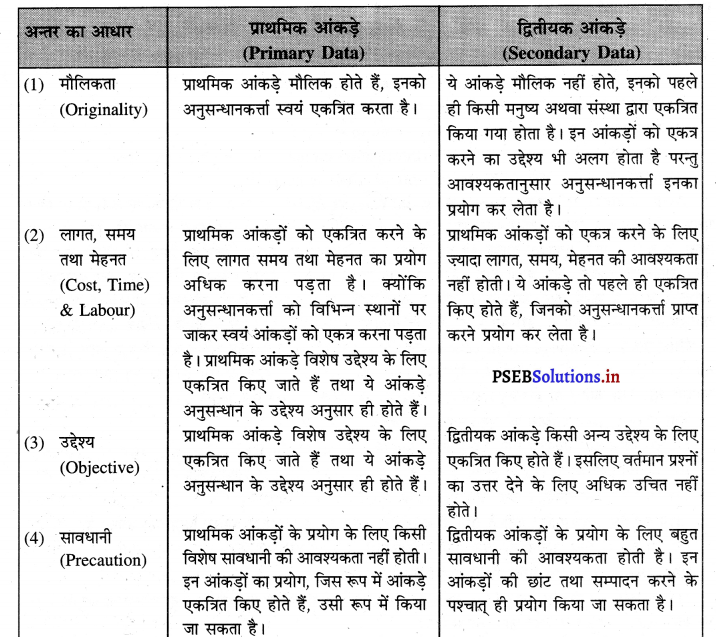

प्रो० सीकरिस्ट के अनुसार, “प्राथमिक आंकड़े तथा द्वितीयक आंकड़ों में संकेत दर्जे का अन्तर होता है, प्रकार का कोई अन्तर नहीं होता अर्थात् ये आंकड़े जो कि किसी मनुष्य अथवा संस्था द्वारा एकत्रित किए गए हैं। उस मनुष्य अथवा संस्था के लिए ये आंकड़े प्राथमिक आंकड़े होते हैं, परन्तु ये आंकड़े जब किसी अन्य मनुष्य अथवा संस्था द्वारा प्रयोग किए जाते हैं तो ये द्वितीयक आंकड़े बन जाते हैं। इसलिए इन आंकड़ों में केवल दर्जे का ही अन्तर है प्रकार का कोई अन्तर नहीं।”
प्रश्न 3.
प्राथमिक आंकड़ों को एकत्रित करने की विधियों की व्याख्या करो। प्रत्यक्ष व्यक्तिगत अनुसन्धान के गुण तथा दोष बताओ।
(Explain the methods of collecting Primary Data. Give the merits and demerits of Direct Personal Investigation.)
उत्तर-
जब सांख्यिकी अनुसन्धान के लिए एक अनुसन्धानकर्ता स्वयं आंकड़े एकत्रित करता है तो इनको प्राथमिक आंकड़े कहा जाता है। प्राथमिक आंकड़ों को एकत्रित करने की प्रमुख्य विधियां निम्नलिखित अनुसार हैं-
- प्रत्यक्ष व्यक्तिगत अनुसन्धान (Direct Personal Investigation)
- अप्रत्यक्ष मौखिक अनुसन्धान (Indirect Oral Investigation)
- संवाददाता से सूचना (Information from correspondents)
- डाक प्रश्नावली के माध्यम द्वारा सूचना (Information through Mailed Questionnaires)
- गणकों के माध्यम द्वारा सूचना (Information through anumerators)
प्रत्यक्ष व्यक्तिगत अनुसन्धान (Direct Personal Investigation)-प्राथमिक आंकड़ों को एकत्र करने के लिए प्रथम विधि प्रत्यक्ष व्यक्तिगत अनुसन्धान विधि है। इस विधि में अनुसन्धानकर्ता आय स्वयं सूचना देने वालों के पास जाता है तथा आंकड़े एकत्रित करता है। इस विधि द्वारा विश्वसनीय आंकड़े एकत्रित किए जा सकते हैं, यदि अनुसन्धानकर्ता मेहनती, धैर्य वाला तथा निरपक्ष स्वभाव वाला होता है। उदाहरणस्वरूप गुरु नानक देव युनिवर्सिटी अमृतसर में काम करने वाले कर्मचारियों सम्बन्धी कोई जांच-पड़ताल करनी है तो जांचकर्ता युनिवर्सिटी में जाकर कर्मचारियों से बात करता है। इस प्रकार जो आंकड़े एकत्रित किए जाते हैं, उनको प्राथमिक आंकड़े कहा जाता है।
विधि का क्षेत्र (Scope of the method)-यह विधि ऐसे अनुसन्धान के लिए उचित होती है जहां जांच-पड़ताल का क्षेत्र सीमित हो। जहां अनुसन्धान में मौलिक आंकड़ों की आवश्यकता होती है तथा आंकड़ों को गुप्त रखना हो। आंकड़े शुद्ध तथा जटिल हों तो अनुसन्धानकर्ता स्वयं ही ऐसे आंकड़े एकत्र कर सकता है।
गुण (Merits)-इस विधि के मुख्य गुण निम्नलिखित अनुसार हैं
- इस विधि द्वारा एकत्रित किए गए आंकड़े मौलिक (original) होते हैं।
- यह विधि लचकदार (Elastic) भी है क्योंकि अनुसन्धानकर्ता प्रश्नों की आवश्यकता अनुसार बदल सकता है।
- इस विधि द्वारा एकत्रित किए आंकड़ों में शुद्धता का गुण पाया जाता है।
- यह विधि विश्वसनीय होती है तथा प्राप्त की जानकारी पर पूर्ण रूप में भरोसा किया जा सकता है।
- इस ढंग से मुख्य सूचना के बिना अधिक जानकारी भी प्राप्त हो जाती है।
दोष (Demerits)—
इस विधि में निम्नलिखित दोष भी हैं-
- इस विधि को विशाल क्षेत्र (Wide Areas) में लागू नहीं किया जा सकता, क्योंकि अनुसन्धानकर्ता प्रत्येक स्थान पर स्वयं जाकर आंकड़े एकत्रित नहीं कर सकता।
- यह विधि अधिक खर्चीली (More Costly) है, आंकड़ों को एकत्र करने के लिए अधिक मेहनत की आवश्यकता होती है।
- इस विधि में व्यक्तिगत पक्षपात (Favouritism) भी हो सकता है। इसलिए प्राप्त परिणाम दोषपूर्ण हो सकते हैं।
- इस विधि द्वारा आंकड़े एकत्र करने के लिए अधिक समय (More time) नष्ट हो जाता है।
- इस विधि के लिए सिखलाई के माहिर (Trained) व्यक्तियों की आवश्यकता होती है।
![]()
प्रश्न 4.
अप्रत्यक्ष मौखिक अनुसन्धान प्रयोग कब किया जाता है ? इसके गुण दोष तथा सावधानियां लिखें।
(Describe the suitability of Indirect oral investigation. What are its merits, demerits, and precautions.)
उत्तर-
अप्रत्यक्ष मौखिक अनुसन्धान (Indirect Oral Investigation)-प्राथमिक आंकड़े एकत्र करने के लिए अप्रत्यक्ष मौखिक अनुसन्धान की विधि भी अपनाई जाती है। इस विधि अनुसार अनुसन्धानकर्ता सूचना देने वाले सभी व्यक्तियों को नहीं मिलता, बल्कि ऐसे व्यक्तिों से जानकारी प्राप्त करता है, जिनको एक विशेष वर्ग के लोगों की पूर्ण जानकारी होती है तथा जो अच्छे ढंग से सूचना देने की योग्यता रखते हैं। उदाहरणस्वरूप जैसे कि किसी उद्योग में काम पर लगे मज़दूरों सम्बन्धी जानकारी मज़दूरों से प्राप्त न करके यह सूचना मौखिक रूप में मज़दूर समूहों तथा उद्योगपतियों से प्राप्त की जाती है। इस विधि को अप्रत्यक्ष मौखिक अनुसन्धान की विधि कहा जाता है।
विधि का क्षेत्र (Scope of the Method) यह विधि विशाल क्षेत्र में लागू की जा सकती है। जब सूचना देने वाले अज्ञानी होते हैं तथा उनकी संख्या इतनी अधिक हो कि सम्पर्क करना सम्भव न हो तो ऐसी स्थिति में अप्रत्यक्ष अनुसन्धान की विधि अधिक उचित होती है।
गुण (Merits) इस विधि के गुण निम्नलिखित हैं –
- यह विधि विशाल क्षेत्र (Wide Area) में लागू होती है।
- यह विधि कम खर्चीली (Less Costly) है। इसमें समय, धन तथा मेहनत कम खर्च होती है।
- इस विधि में पक्षपात (Bias) की सम्भावना नहीं होती।
- सूचना माहिरों (Experts) द्वारा दी जाती है, इसलिए सरलतापूर्वक जल्दी से आंकड़े प्राप्त किए जाते हैं।
दोष (Demerits)-इस विधि में निम्नलिखित दोष भी हैं-
- इस विधि द्वारा आंकड़ों में शुद्धता की कमी (Less Accuracy) हो सकती है, क्योंकि आंकड़ों सम्बन्धी लोगों की जगह पर मज़दूर समूहों अथवा मालिकों से प्राप्त किए जाते हैं।
- इस विधि में सूचना देने वाले पक्षपात (Bias) का प्रयोग कर सकते हैं।
- आंकड़े व्यक्तिगत दृष्टिकोण अनुसार दिए गए हैं, इसलिए प्राप्त किए परिणाम गलत (Wrong Results) भी हो सकते हैं।
प्रश्न 5.
संवाददाता द्वारा सूचना प्राप्त करने के गुण व दोष लिखें। इनके प्रयोग में क्या सावधानियां बरतनी चाहिए ?
(What are the merits and demerits of correspondent method? What are precautions while using this method ?)
उत्तर-
संवाददाताओं से सूचना (Information from Correspondents)-इस विधि में अनुसन्धानकर्ता स्थानिक एजेन्टों अथवा संवाददाताओं की सहायता से सूचना प्राप्त करता है। ये संवाददाता अपने क्षेत्रों में से ज़रूरी सूचना एकत्रित करके अनुसन्धानकर्ता को भेज देते हैं। इस विधि द्वारा बहुत विशाल क्षेत्र में से उचित तथा नवीन आंकड़े सरलता से प्राप्त हो सकते हैं।
विधि का क्षेत्र (Scope of the Method) यह विधि साधारण तौर पर रसालों, अख़बारों, टेलीविज़न तथा रेडियो द्वारा अपनाई जाती है। स्थानिक संवाददाता दिन-प्रतिदिन की घटनाओं के बारे ताजा जानकारी प्रदान करते हैं।
गुण (Merits) इस विधि के मुख्य गुण इस प्रकार हैं
- यह विधि किफ़ायती (Economical) होती है। इस विधि में धन, समय तथा परिश्रम की बचत होती है।
- इस विधि को विशाल क्षेत्र (Wide Area) में लागू किया जा सकता है। इससे दूर-दूर से सूचना प्राप्त की जा सकती है।
- इस विधि द्वारा निरन्तर (Continuously) तथा निरन्तरता से प्राप्त की जा सकती है।
- जब बहुत ऊंचे दर्जे की शुद्धता न अनिवार्य हो तो सापेक्षक शुद्धता (Relative Accuracy) के लिए यह विधि अधिक उचित है।
दोष (Demerits)-इस विधि के मुख्य दोष निम्नलिखित हैं
- इस विधि द्वारा एकत्रित किए आंकड़ों की मौलिकता की कमी (Less Originality) पाई जाती है।
- संवाददाताओं द्वारा भेजे आंकड़े पक्षपात (Biased Data) वाले हो सकते हैं।
- इस विधि अनुसार सूचना प्राप्त करना संवादाताओं की कुशलता पर निर्भर करता है। यदि संवाददाता कुशल न हो तो सूचना प्राप्त करने के लिए बहुत-सा समय (Time) नष्ट हो जाता है।
- विभिन्न संवाददाताओं द्वारा भेजी गई सूचना में एकसारता (Uniformity) का अभाव होता है, परिणामस्वरूप जांच-पड़ताल करनी कठिन हो जाती है।
- इसी विधि द्वारा सूचना देर से प्राप्त होती है। देरी से एकत्रित किए (Delay in collection) आंकड़े ज्यादा लाभदायक नहीं होते।
प्रश्न 6.
डाक प्रश्नावली के माध्यम द्वारा सूचना के गुण तथा दोष बताएं। (What are the merits and demerits of information through Mailed Questionnaires ?)
उत्तर-
डाक प्रश्नावली के माध्यम द्वारा सूचना (Information through Mailed Questionnaires)प्राथमिक आंकड़े एकत्रित करने के लिए डाक प्रश्नावली के माध्यम द्वारा सूचना के ढंग का प्रयोग भी किया जाता है। इस विधि में प्रश्नावली तैयार की जाती है तथा इसको विभिन्न सूचना देने वाले मनुष्यों के पास डाक द्वारा भेजा जाता है। प्रश्नावली के साथ एक विनती-पत्र भी भेजा जाता है, जिसमें प्रश्नावली को भरने के पश्चात् जल्दी वापस भेजने की विनती की जाती है तथा विश्वास दिलाया जाता है कि उसकी सूचना को गुप्त रखा जाएगा। सूचना देने वाला प्रश्नावली में पूछे गए प्रश्नों के उत्तर भरकर वापिस अनुसन्धानकर्ता को भेज देता है, इस प्रकार प्रश्नावलियों के आधार पर आंकड़े एकत्रित किए जाते हैं।
विधि का क्षेत्र (Scope of Method) डाक के माध्यम द्वारा सूचना एकत्र करने की इस विधि को उस समय लागू किया जाता है जब जांच-पड़ताल का क्षेत्र विशाल होता है तथा सूचना देने वाले व्यक्ति शिक्षित होते हैं।
गुण (Merits) इस विधि द्वारा आंकड़े एकत्र करने के मुख्य गुण निम्नलिखित हैं –
- इस ढंग को बहुत खर्चीली (Economical) विधि भी कहा जाता है क्योंकि विभिन्न स्थानों से कम खर्च करके सूचना एकत्र की जा सकती है।
- जब जांच-पड़ताल का विशाल क्षेत्र (Wide Area) होता है तो इस विधि द्वारा सरलता से आंकड़े एकत्र किए जा सकते हैं।
- इस विधि द्वारा एकत्रित किए आंकड़े मौलिक (original) होते हैं। क्योंकि सूचना देने वाले मनुष्य आंकड़ों को स्वयं भरकर भेजते हैं।
दोष (Demerits) – इस विधि के मुख्य दोष निम्नलिखित हैं
- इस विधि का मुख्य दोष यह है कि सूचना देने वाले मनुष्य की कम रुचि (Lack of Interest) होने के कारण कई बार प्रश्नावलियों को वापस नहीं भेजा जाता। इसलिए सूचना प्राप्त न होने के कारण अनुसन्धान करने में देर लग जाती है।
- इस विधि में लोचशीलता की कमी (Less Elasticity) होने के कारण उचित सूचना प्राप्त नहीं होती, क्योंकि प्रश्न न समझ आने की स्थिति में सूचना देने में मुश्किल आती है।
- सूचना पक्षपात पूर्ण (Biased) भी हो सकती है, क्योंकि सूचना देने वाला अपनी इच्छानुसार सूचना प्रदान करता है। इसलिए उचित परिणाम प्राप्त नहीं किए जा सकते।
- यह विधि सीमित क्षेत्र (Limited-Area) में लागू की जा सकती है, क्योंकि इसको केवल पढ़े-लिखे लोगों से आंकड़े प्राप्त करने के लिए प्रयोग किया जा सकता है।
- यह विधि जटिल (Complex) भी होती है, क्योंकि प्रश्नावली में पूछे गए प्रश्न का उत्तर गलत भी दिया जा सकता है। इसलिए आंकड़ों की शुद्धता सौ प्रतिशत पूर्ण नहीं होती।
प्रश्न 7.
एक अच्छी प्रश्नावली में कौन-कौन से गुण होने चाहिए ? (What are the qualities of a good questionnaire ?)
उत्तर-
अच्छी प्रश्नावली के गुण (Qualities of a good questionnaire)-
1. अनुसन्धान का उद्देश्य-अनुसन्धान का उद्देश्य स्पष्ट होना चाहिए। इस प्रकार बनाए गए प्रश्न ऐसे होने चाहिए, जिन द्वारा उद्देश्य की प्राप्ति के लिए अनिवार्य सूचना दी गई हो।
2. प्रश्नों की कम संख्या–प्रश्नावली में प्रश्नों की संख्या कम-से-कम होनी चाहिए। प्रश्न केवल अनुसन्धान से सम्बन्धित होने चाहिए तो ही सूचना देने वाला प्रश्नावली को सरलता से भर सकता है।
3. प्रश्नों का उचित क्रम-प्रश्नावली में दिए गए प्रश्न उचित तथा तर्कपूर्वक क्रम में होने चाहिए।
4. प्रश्नावली की सरलता-प्रश्नावली में सरलता का गुण होना चाहिए अर्थात् प्रश्न इस तरह के होने चाहिए कि सूचना देने वाले की समझ में सरलता से आ सकें तथा सूचना देने वाला उचित सूचना सरल ढंग से तथा स्पष्ट कर सके।
5. निजी प्रश्न-सूचना देने वालों को निजी प्रकार के प्रश्न नहीं पूछने चाहिए अर्थात् प्रश्नावली के प्रश्न लोगों की धार्मिक, सामाजिक, भावनाओं को चोट पहुँचाने वाले नहीं होने चाहिए।
6. सूचना का विश्वास-प्रश्नावली का महत्त्वपूर्ण गुण यह होना चाहिए है कि सूचना देने वाला बिना किसी डर से सूचना प्रदान कर सकें। इसलिए सूचना देने वाले बिना डर के उचित सूचना प्रदान करते हैं।
7. पक्षपात का अभाव-प्रश्नावली में ऐसे प्रश्न नहीं होने चाहिए जोकि पक्षपात को स्पष्ट करते हों। प्रश्न इस प्रकार के होने चाहिए, जो बिना पक्षपात तथा मतभेद अनुसार बनाए गए हों। ऐसी स्थिति में प्रश्नावली द्वारा उचित सूचना प्राप्त नहीं होगी, यदि प्रश्नावली पक्षपात रहित नहीं होती।
8. संख्या सम्बन्धी प्रश्न-इस बात का ध्यान रखना चाहिए है कि प्रश्न ऐसे न हों, जिनमें सूचना देने वाले को हिसाब-किताब लगाना पड़े, जैसे कि लोग अपनी आय में से कितने प्रतिशत हिस्सा फल तथा सब्जियों पर खर्च करते हैं। इसलिए प्रश्न बनाते समय अनुसन्धानकर्ता को गणना का स्वयं काम करना चाहिए तथा प्रश्न इस प्रकार के होने चाहिए जिनमें अनिवार्य सूचना अनुसन्धानकर्ता स्वयं प्राप्त करें।
9. पूर्व निरीक्षण-प्रश्नावली को अन्तिम रूप देने से पहले इसकी जांच-पड़ताल कर लेनी चाहिए अर्थात् स्थानिक तौर पर कुछ मनुष्यों को प्रश्नावलियों में विभाजित कर सूचना भरवा लेनी चाहिए। इस प्रकार प्रश्नावली के मार्ग में आने वाली मुश्किलों के अनुसार इसको परिवर्तित कर देना चाहिए। इसलिए पूर्व निरीक्षण का कार्य अच्छी प्रश्नावली के लिए उचित माना जाता है।
10. सच्चाई की परख-सूचना एकत्रित करने वाले को ऐसे प्रश्न भी पूछने चाहिए, जिनसे सच्चाई की परख की जा सके। इस उद्देश्य के लिए प्रश्नावली में सच्चाई की परख की सम्भावना होनी चाहिए।
11. प्रश्नावली का मनमोहक होना-प्रश्नावली मनमोहक तथा प्रभाव पाने वाली होनी चाहिए। प्रश्न ऐसे होने चाहिए जिनमें सूचना देने वाले की रुचि में वृद्धि हो। उत्तर देने के लिए उचित स्थान प्राप्त होना चाहिए।
12. निर्देश-प्रश्नावली को भरने के लिए स्पष्ट तथा उचित निर्देश देने चाहिए जिससे प्रश्नावली भरते समय किसी प्रकार की मुश्किल का सामना न करना पड़े।
13. सूचना देने वाली की सुविधा-प्रश्नावली भेजते समय सूचना देने वाले की सुविधा को ध्यान में रखना चाहिए। प्रश्न सीधे तथा सम्बन्धित होने चाहिए जिनका उत्तर बहुत कम समय में दिया जा सके। अनिवार्य डाक टिकट लिफाफे समेत अपना पूरा पता लिखकर भेजनी चाहिए। इस प्रकार सूचना देने वाले की सुविधा में ध्यान रखना चाहिए।
प्रश्नावली को भरकर वापस भेजने की विनती की जानी चाहिए। सूचना देने वाले को यह विश्वास दिलवाना अनिवार्य होता है कि एकत्रित की गई सूचना अनुसन्धान के लिए ही प्रयोग की जाएगी तथा पूर्ण तौर पर गुप्त रखी जाएगी। इस प्रकार की प्रश्नावली द्वारा कम समय में अधिक-से-अधिक सूचना प्राप्त की जा सकती है।
प्रश्न 8.
द्वितीयक आंकड़े एकत्रित करने की विधियों को स्पष्ट कीजिए। (Explain the methods of collecting secondary data.)
उत्तर-
द्वितीयक आंकड़ों को एकत्र करने के दो मुख्य स्रोत होते हैं –
A. प्रकाशित स्रोत (Published Sources)
B. अप्रकाशित स्रोत (Unpublished Sources) A.
प्रकाशित स्त्रोत (Published Sources) द्वितीयक आंकड़ों के मुख्य प्रकाशित स्रोत अग्रलिखित अनुसार-
1. अन्तर्राष्ट्रीय प्रकाशन (I.M.F.)-द्वितीयक आंकड़ों को एकत्र करने के दो मुख्य स्रोत होते हैं। विश्व बैंक (World Bank) इत्यादि संस्थाएं सर्वेक्षण करके आंकड़ों को प्रकाशित करती हैं। इन आंकड़ों का प्रयोग व्यक्तियों द्वारा अनुसन्धान में किया जा सकता है।
2. सरकारी प्रशासन-प्रत्येक देश की सरकार देश में विभिन्न प्रकार के आंकड़े प्रकाशित करती है जैसे कि भारत में केन्द्रीय तथा राज्य सरकारें, विभिन्न विभागों से सम्बन्धित आंकड़े प्रकाशित करती हैं। ये आंकड़े सांख्यिकी विशेषज्ञों द्वारा एकत्रित किए जाते हैं, इस उद्देश्य के लिए सूचना मन्त्रालय स्थापित किए होते हैं।
3. अर्द्ध सरकारी प्रकाशन-अर्द्ध सरकारी संस्थाएं जैसे कि पंचायतें, नगरपालिकाएं, नगर-निगम, जिला परिषद् इत्यादि को विभिन्न प्रकार के आंकड़ों का रिकॉर्ड रखते हैं, जैसे कि जन्म, मृत्यु, सेहत, चुंगी द्वारा आय इत्यादि से सम्बन्धित आंकड़े प्रकाशित करती रहती है। ये आंकड़े भी अनुसन्धानकर्ता के लिए लाभदायक होते हैं।
4. आयोगों तथा कमेटियों की रिपोर्ट (Reports of Committees and Commissions) सरकार द्वारा विभिन्न उद्देश्यों के लिए आयोगों तथा कमेटियों की स्थापना की जाती है। इन आयोगों तथा कमेटियों द्वारा रिपोर्ट पेश की जाती हैं। जिनमें लाभदायक आंकड़े प्रदान किए जाते हैं, जैसे कि वित्त आयोग की रिपोर्ट, इजारेदार आयोग की रिपोर्ट, योजना कमीशन की रिपोर्ट इत्यादि द्वारा भी आंकड़े प्राप्त किए जा सकते हैं।
5. अनुसन्धान संस्थाओं के प्रकाशन (Publication of Research Institute) बहुत-सी अनुसन्धान संस्थाएं अनुसन्धान करने के पश्चात् विभिन्न प्रकार के आंकड़े प्रदान करती हैं जैसे कि विश्वविद्यालय तथा अनुसन्धान संस्थाएं जैसे कि भारतीय सांख्यिकी संस्था, राज्य सरकारों की सांख्यिकी संस्थाएं, अनुसन्धान करने के पश्चात् अनुसन्धान पत्र तथा पत्रिकाएं प्रकाशित करती हैं। द्वितीयक आंकड़ों को प्राप्त करने का यह एक महत्त्वपूर्ण स्रोत होता है।
6. समाचार-पत्र तथा पत्रिकाओं द्वारा प्रकाशन (Papers and Journal Publications)-प्रत्येक देश में समाचार-पत्रों तथा पत्रिकाओं में भी आंकड़े प्रकाशित किए जाते हैं जैसे कि आंकड़ों से सम्बन्धित समाचार-पत्र (Economics Times) तथा पत्रिकाएं। जैसे कि कामर्स योजना इत्यादि में भी आंकड़े प्रकाशित किए जाते हैं। यह पत्र तथा पत्रिकाएं भी द्वितीयक आंकड़ों का स्रोत बन सकती हैं।
B. अप्रकाशित स्रोत (Unpublished Sources)-द्वितीयक अथवा दूसरे दर्जा के आंकड़ों का अप्रकाशित साधनों द्वारा भी प्राप्त किया जा सकता है। बहुत-से उद्योग अपने पूंजी निर्माण, उत्पादन, बिक्री, मज़दूरों की संख्या का रिकार्ड अपने पास रखते हैं। इस रिकॉर्ड को प्रकाशित नहीं किया जाता। परन्तु अनुसन्धानकर्ता ऐसे अप्रकाशित साधनों से सूचना प्राप्त कर सकता है।
इसी तरह किसी व्यक्ति के पास हाथ देखने ऐतिहासिक पुस्तकों के आंकड़े सम्भाल कर रखे होते हैं अथवा पुराने बुजुर्गों को भूतकाल की दिलचस्प घटनाओं का पता होता है। इस प्रकार ऐसे आंकड़े जिनको प्रकाशित नहीं करवाया जाता, उन साधनों द्वारा भी सूचना प्राप्त की जा सकती है जो कि अनुसन्धान के लिए आंकड़ों का महत्त्वपूर्ण आधार बन सकते हैं।
![]()
प्रश्न 9.
द्वितीयक आंकड़ों के प्रयोग सम्बन्धी कौन-कौन सी सावधानियां आवश्यक होती हैं ? (What are the precautions necessary for the use of Secondary Data ?)
उत्तर-
1. आंकड़ों का साधन (Sources of Data)-द्वितीयक आंकड़े प्रयोग करते समय आंकड़ों के स्रोत का पता होना चाहिए। यदि आंकड़े सरकार द्वारा एकत्रित किए गए हैं तो ये आंकड़े आमतौर पर उचित होते हैं। इसलिए प्रो० कुजनेटस अनुसार, “द्वितीयक आंकड़ों की शुद्धता उनके साधन पर निर्भर करती है।”
2. अनुसन्धान एजेन्सी की योग्यता (Ability to Collecting Agency) – द्वितीयक आंकड़े किसी मनुष्य अथवा संस्था द्वारा एकत्रित किए गए हैं। यदि अनुसन्धानकर्ता ईमानदार, तजुर्बेकार कुशल तथा निरपक्ष है तो एकत्रित किए आंकड़े विश्वसनीय होते हैं।
3. आंकड़ों का उद्देश्य तथा क्षेत्र (Motive and Scope of Data) – यदि द्वितीयक आंकड़े एकत्रित किए गए थे तो उन आंकड़ों के उद्देश्य तथा क्षेत्र को ध्यान में रखना चाहिए है। यदि अनुसन्धानकर्ता का उद्देश्य तथा क्षेत्र भी द्वितीयक आंकड़ों के अनुकूल है तो ऐसे आंकड़ों का प्रयोग सरलता से किया जा सकता है। इसलिए द्वितीयक आंकड़े अनुसन्धान के अनुकूल होने चाहिए।
4. आंकड़े एकत्र करने की विधि (Methods of Data Collections)-द्वितीयक आंकड़े किस विधि द्वारा एकत्रित किए गए हैं। इस सम्बन्धी भी अनुसन्धानकर्ता को ज्ञान होना चाहिए है। यदि आंकड़ों को एकत्रित करने के लिए अपनाई गई विधि विश्वसनीय है तो ऐसे आंकड़ों को सरलता से वर्तमान अनुसन्धान के लिए प्रयोग किया जा सकता है।
5. आंकड़े एकत्रित करने का समय (Time of Collection)—जो आंकड़े हम प्राप्त करना चाहते हैं, उनकी जांच-पड़ताल के समय को भी ध्यान में रखना चाहिए अर्थात् कौन-कौन सी स्थितियों में ये आंकड़े एकत्रित किए गए थे। यदि जांच-पड़ताल कुछ विशेष स्थितियों लड़ाई, बाढ़, भूचाल के समय की गई थी तो ऐसे आंकड़ों से वर्तमान अनुसन्धान लाभदायक नहीं होगा। शान्ति समय स्थितियां असाधारण समय से भिन्न होती हैं।
6. शुद्धता का स्तर (Degree of Accuracy)-जो आंकड़े द्वितीयक आंकड़ों के रूप में प्रयोग किए जाते हैं, उनकी शुद्धता की जांच कर लेनी चाहिए। यदि शुद्धता का स्तर ऊंचा हो तो इन आंकड़ों को विश्वास से प्रयोग किया जा सकता है तथा लाभदायक परिणाम प्राप्त किए जा सकते हैं।
7. सांख्यिकी इकाइयों का प्रयोग (Statistical Units) एकत्रित किए द्वितीयक आंकड़ों में प्रयोग की इकाइयों को भी ध्यान में रखना चाहिए। यदि वर्तमान अनुसन्धान में से उसी प्रकार की इकाइयों को शामिल किया गया है, जिनका प्रयोग पहले की तरह अनुसन्धान में किया गया था तो ऐसे आंकड़े विश्वसनीय परिणाम प्रदान करने में सहायक होते हैं। परन्तु यदि सांख्यिकी इकाइयों में भिन्नता पाई जाती है तो ऐसा आंकड़ों का प्रयोग नहीं करना चाहिए, क्योंकि अनुसन्धान के लिए ऐसे आंकड़े कम लाभदायक सिद्ध होते हैं।
इसलिए हम यह कह सकते हैं कि द्वितीयक आंकड़े जैसे दिखाई देते हैं, उसी रूप में ही उनको स्वीकार करना नहीं चाहिए। द्वितीयक आंकड़ों का प्रयोग करते समय इनका सम्पादन करके वर्तमान अनुसन्धान के अनुकूल बना लेना चाहिए। इस तरह विश्वसनीय परिणाम प्राप्त किए जा सकते हैं।
प्रश्न 10.
भारत में जनगणना संगठन पर नोट लिखो। (Write a note on Census Organisation in India.)
उत्तर –
भारत में विधिपूर्वक जनगणना 1891 में आरम्भ की गई परन्तु वैज्ञानिक ढंग से जनगणना का कार्य स्वतन्त्रता के पश्चात् 1951 में किया गया। जनगणना करने के लिए जिला स्तर पर जिला आंकड़ा विभागों की स्थापना की गई। उसके पश्चात् इस विधि में बहुत-से परिवर्तन किए गए हैं। आरम्भ में जिला स्तर पर जनसंख्या की संख्या तथा सामाजिक तथा आर्थिक आंकड़े भी एकत्रित किए जाते थे। 1961 की जनगणना में गांव, कस्बों तथा शहरों सम्बन्धी विभिन्न-सूचना एकत्रित की जाने लगी। 1971, 1981 तथा 1991 में जनगणना के आंकड़ों को वैज्ञानिक ढंग से पेश करने के लिए तालिका तथा आंकड़े पेश किए जाने लगे।
भारत में रजिस्ट्रार जनरल की नियुक्ति की गई है जो जनगणना के आंकड़े एकत्रित करने तथा पेश करने के लिए ज़िम्मेदार होता है। प्रत्येक दस वर्ष में जनसंख्या के आंकड़े एकत्रित किए जाते हैं। प्रत्येक दहाके के प्रथम वर्ष जनसंख्या के आंकड़ों को एकत्रित किया जाता है। इस उद्देश्य के लिए राष्ट्रीय स्तर पर नई दिल्ली में रजिस्ट्रार जनरल का दफ़्तर है। सभी राज्यों, केन्द्र प्रशासन राज्यों (Union Territories) में आंकड़ा विभाग बनाए हुए हैं। प्रत्येक सूबे के जिला स्तर पर आंकड़ा अफसर नियुक्त किया गया है जोकि जनगणना का कार्य करता है, जो आंकड़े जिला स्तर पर एकत्रित किए जाते हैं वे सूबे की राजधानी भेजे जाते हैं। प्रत्येक सूबे में आंकड़ों को एकत्रित करके रजिस्ट्रार जनरल के पास नई दिल्ली भेजे जाते हैं, जोकि इन आंकड़ों को प्रकाशित करता है।
जनगणना का कार्य जिले के प्रत्येक गांव, कस्बे तथा शहर में संख्या के आधार पर किया जाता है। इस उद्देश्य के लिए जनसंख्या से सम्बन्धित आंकड़े एकत्रित किए जाते हैं। प्रत्येक गांव का क्षेत्रफल, रिहायशी मकानों की संख्या का विवरण एकत्रित किया जाता है। जनसंख्या में पुरुषों तथा स्त्रियों की संख्या आयु के आधार पर की जाती है। जनजातियों तथा पिछड़ी जातियों का विवरण भी एकत्रित किया जाता है। देश में शिक्षित तथा अनपढ़ लोगों की संख्या का ध्यान भी रखा जाता है। इसके अतिरिक्त पुरुष/स्त्री का पेशा भी पूछकर दर्ज किया जाता है। इस उद्देश्य के लिए श्रमिकों को 9 भागों में विभाजित किया जाता है।
(i) काश्तकार
(ii) कृषि मज़दूर
(iii) पशु पालन, मछली पालन, जंगलात, बागबानी इत्यादि सम्बन्धित कार्य।
(iv) खानों तथा उत्खाने, लट्ठा बनाना
(v)
- निर्माण कार्य, इनमें मरम्मत का कार्य शामिल होता है।
- घरेलू तथा छोटे उद्योग तथा मरम्मत
(vi) उसारी
(vii) व्यापार तथा कामर्स
(viii) यातायात, संचार तथा अनुपात।
(ix) अन्य सेवाएं, सीमान्त मज़दूर तथा गैर-मज़दूर तथा उनकी पुरुष-स्त्री अनुपात।
इस प्रकार की सूचना प्रत्येक वार्ड, गांव, कस्बे, शहरी तथा यूनियन टैरीटरी से प्राप्त की जाती है। इस सम्बन्ध में जनगणना संगठन ने कुछ धारणाओं की परिभाषा इस प्रकार दी है-
- रिहायशी मकान-जनगणना समय जो कोई मनुष्य तथा परिवार किसी घर में रहता है अथवा दुकान करता है।
- अनुसूचित जाति-सरकार द्वारा प्रकाशित नोटिफिकेशन में अनुसूचित जाति की लिस्ट दी हुई है जोकि हिन्दू, सिक्ख, बौद्धी तथा किसी अन्य धर्म के हो सकते हैं।
- शिक्षित-जो मनुष्य पढ़-लिख सकता है तथा समझ सकता है, उसको शिक्षित में शामिल किया जाता है। इसमें 0-6 वर्ष के बच्चों को शामिल नहीं किया जाता।
- मज़दूर-कोई भी पुरुष अथवा स्त्री जोकि धन कमाने के लिए शारीरिक तथा मानसिक कार्य करते हैं, उनको श्रमिक कहा जाता है। 1991 की जनगणना में सीमान्त मज़दूरों की धारणा को शामिल किया गया है, जिनमें अन्य मज़दूर जिनको वर्ष में 183 दिन कार्य मिलता है। परन्तु जिनको पिछले वर्ष के दौरान कोई कार्य प्राप्त नहीं हुआ उनको गैर मज़दूर कहा जाता है।
- काश्तकार-काश्तकार वह होता है जो अपनी भूमि अथवा किराए की भूमि पर कृषि करके अनाज उत्पन्न करता है।
- कृषि मज़दूर-जो मनुष्य किसी अन्य मनुष्य की जमीन पर पैसे कमाने के लिए कार्य करता है, उसको कृषि मज़दूर कहा जाता है।
- पशु-पालन, मछली-पालन इत्यादि कार्य-जो मनुष्य बागवानी अर्थात् सब्जियां, फल, मिर्च, मसाले इत्यादि उत्पादन के कार्य करते हैं। इनमें पशु-पालन तथा मछली पालन को शामिल किया जाता है।
- खाने तथा उत्खनन-खानों में से लोहा, कोयला, मैंगनीज़ इत्यादि खनिज पदार्थ का उत्पादन करना।
इस प्रकार जनगणना संगठन द्वारा जिला आंकड़ा विभाग, सूबा आंकड़ा विभाग के सहयोग से जनसंख्या सम्बन्धी आंकड़े एकत्रित किए जाते हैं तथा इस उद्देश्य के लिए प्राथमिक आंकड़ों (Primary Data) का प्रयोग किया जाता है।
प्रश्न 11.
राष्ट्रीय सैम्पल सर्वेक्षण संगठन (National Sample Survey Organisation) पर टिप्पणी लिखो।
उत्तर-
भारत में सामाजिक-आर्थिक सर्वेक्षण का कार्य राष्ट्रीय सैम्पल सर्वेक्षण संगठन द्वारा किया जाता है। यह संगठन उद्योगों तथा कृषि के क्षेत्र के आंकड़े एकत्रित करता है। उद्योगों के आंकड़े वार्षिक आधार पर किए जाते हैं तथा कृषि में उत्पादन का अनुमान सैम्पल सर्वेक्षण के आधार पर लगाया जाता है। यह संगठन कौशल के आदेशों अनुसार कार्य करता है। इसमें 5 बुद्धिजीवी 5 आंकड़े विशेषज्ञ होते हैं जोकि केन्द्र राज्य सरकारों का प्रतिनिधित्व करते हैं। यह संगठन डायरेक्टर जनरल तथा मुख्य कार्यकारी अफ़सर की अध्यक्षता में कार्य करता है। इसके साथ एक सहायक डायरेक्टर जनरल तथा चार डिप्टी डायरेक्टर जनरल होते हैं।
![]()
यह संगठन आंकड़े एकत्रित करने के लिए तालिका तैयार करता है। एकत्रित किए आंकड़ों को संगठित किया जाता है। इस उद्देश्य के लिए संगठन का हैड-आफिस कलकत्ता में स्थित है। संगठन का फील्ड उपरेशन डिवीज़न दिल्ली तथा फरीदाबाद में स्थित है। यहां अलग-अलग क्षेत्रों में से आंकड़े एकत्रित करने के आदेश दिए जाते हैं। संगठन के 48 क्षेत्रीय दफ़्तर हैं तथा 117 सब-क्षेत्रीय दफ्तर हैं जोकि देश भर में फैले हुए हैं। आंकड़ों को संगठित करके प्रस्तुतीकरण का कार्य कोलकाता के हैड-आफिस में किया जाता है परन्तु इस उद्देश्य के लिए आंकड़ों के क्रमबद्ध करने के लिए दिल्ली, गिरधी, नागपुर, बंगलौर, अहमदाबाद तथा कोलकाता केन्द्र स्थापित किए गए हैं जहां कि सामाजिक तथा आर्थिक आंकड़ों को एकत्रित करके तालिका तथा तरतीब देने का कार्य किया जाता है।


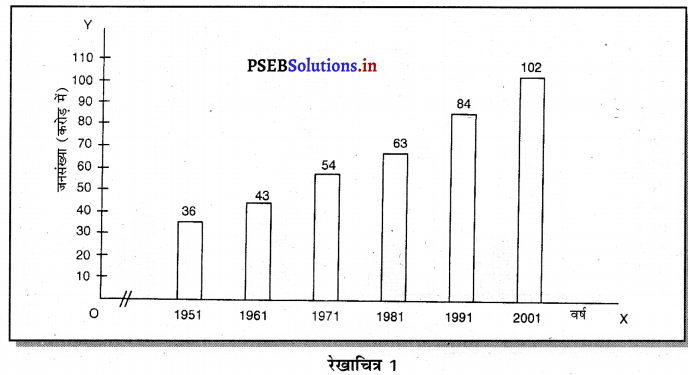


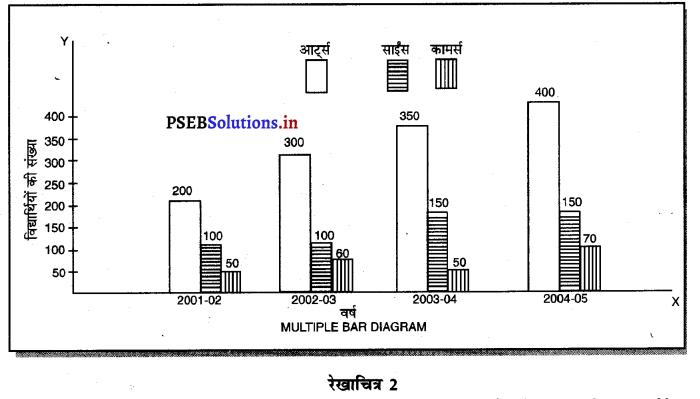


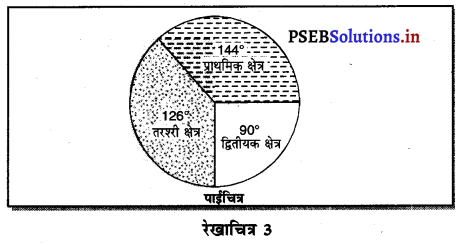
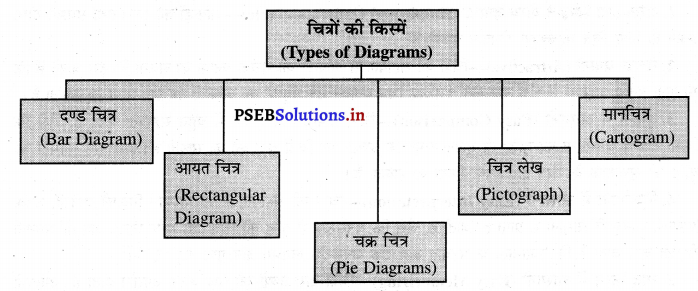


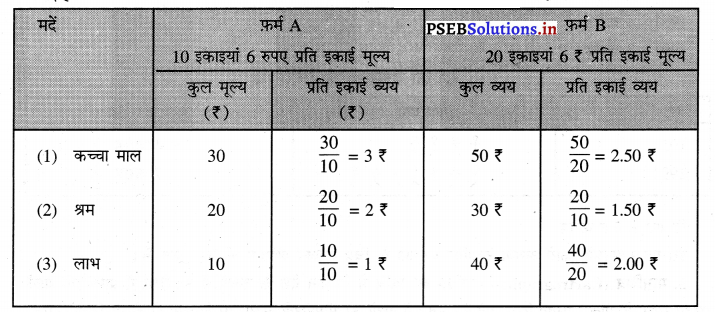
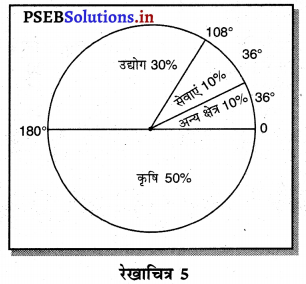

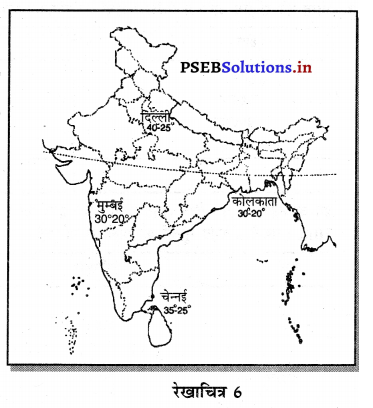

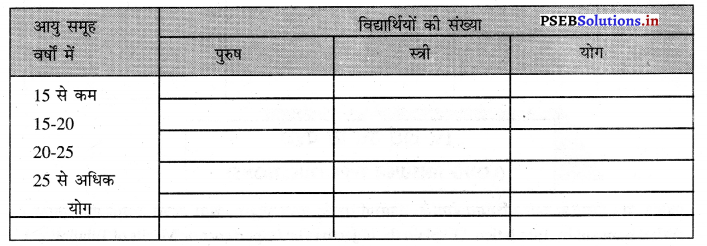
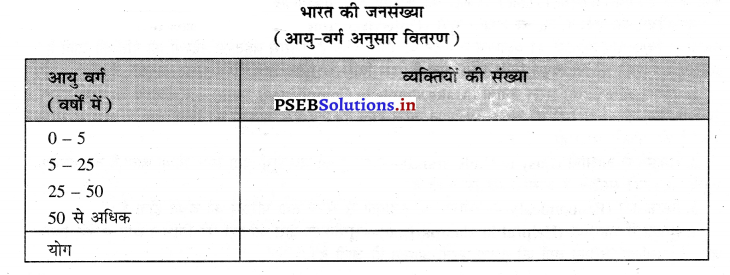
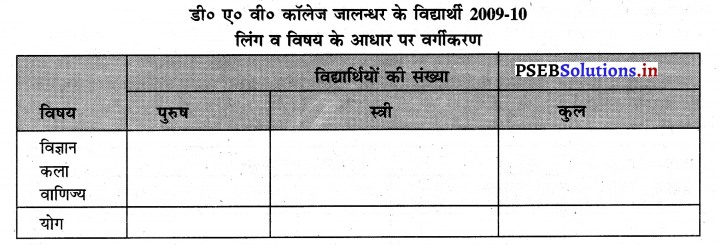
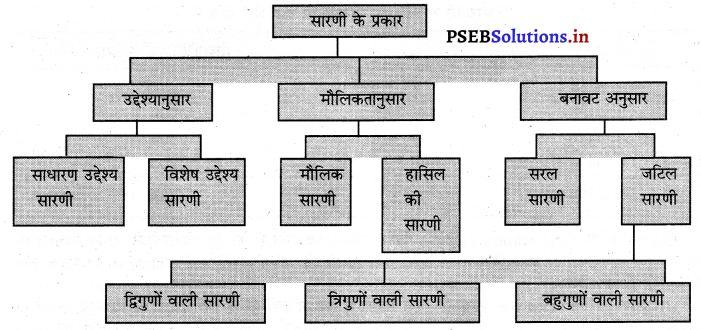
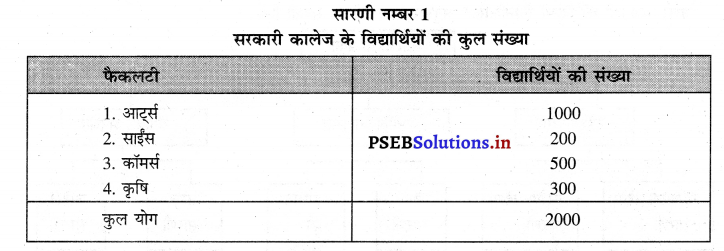
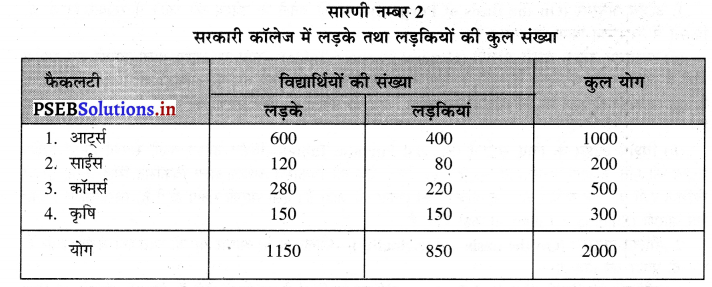

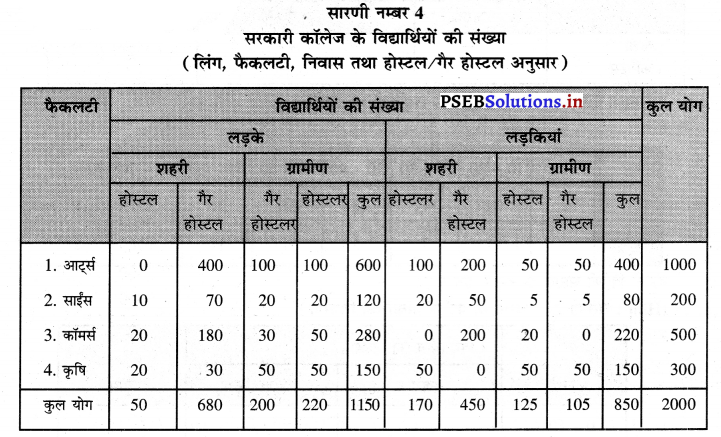
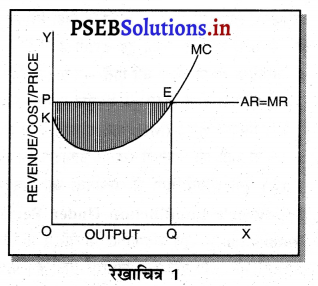
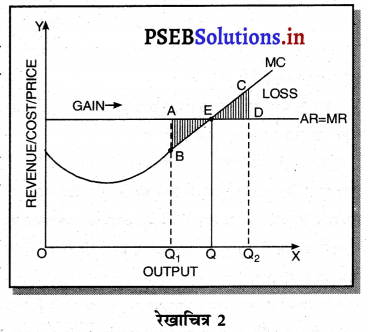
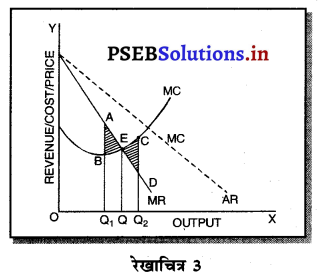
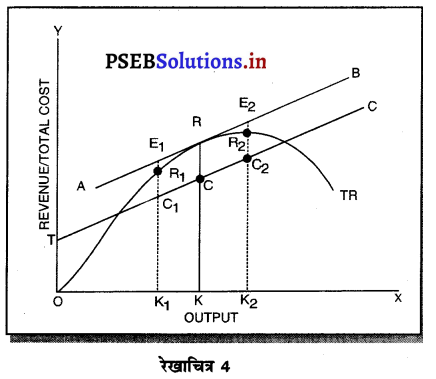







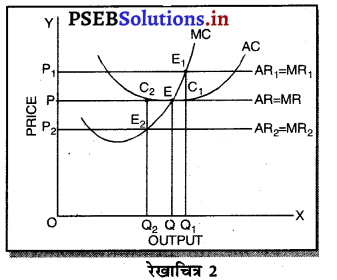
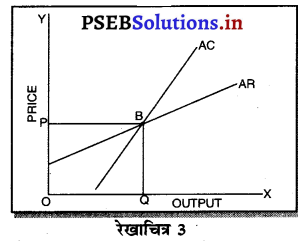



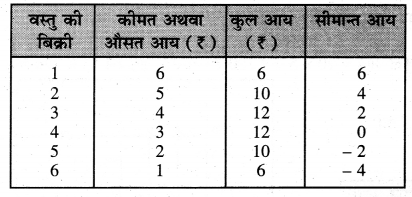
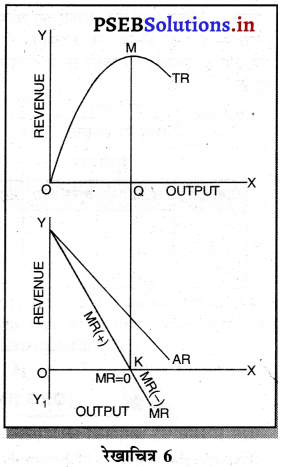
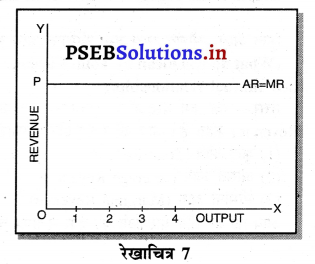
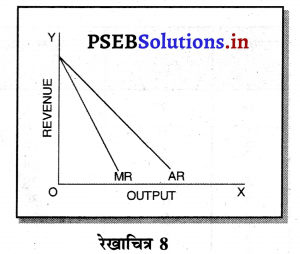
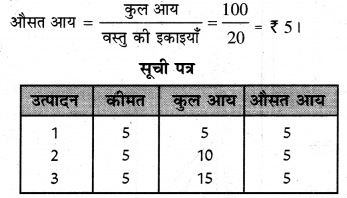

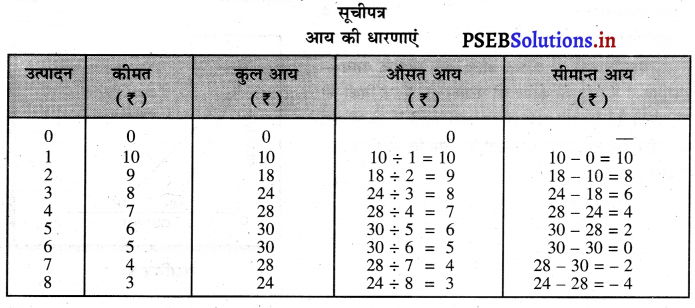


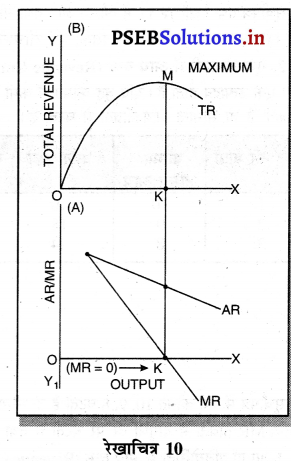

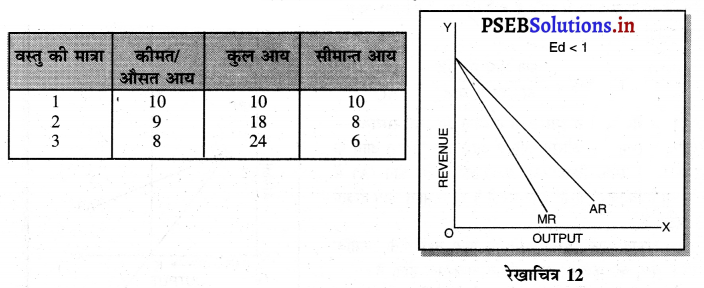
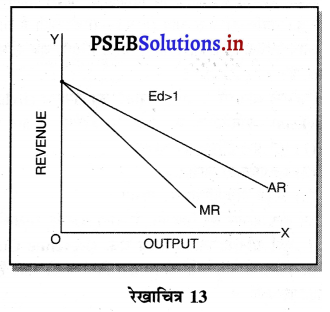












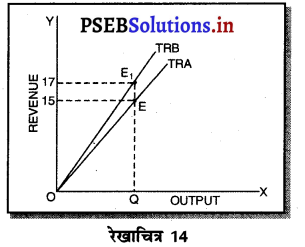









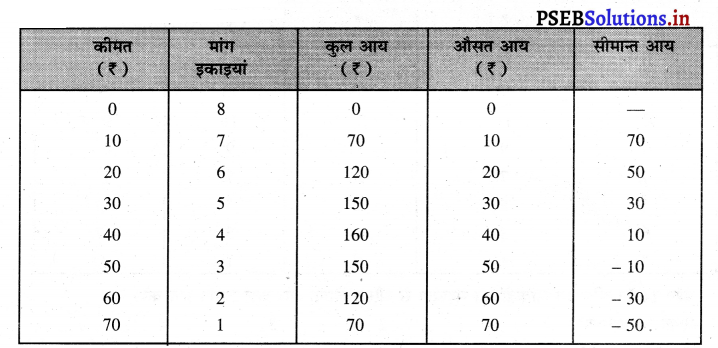

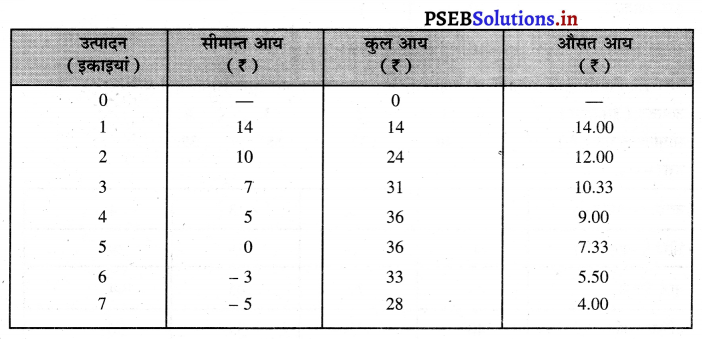

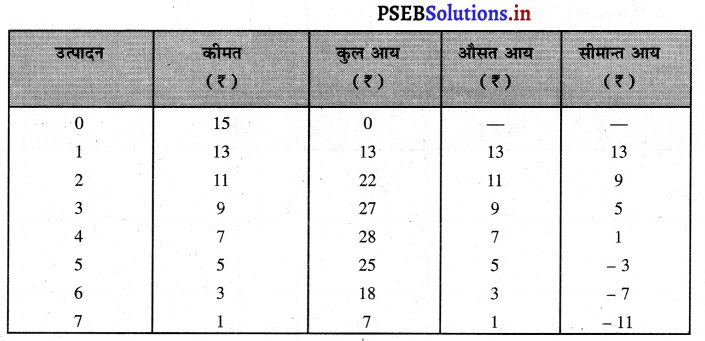







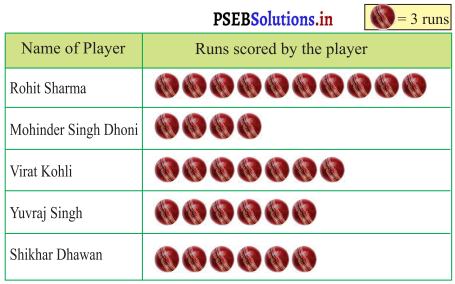



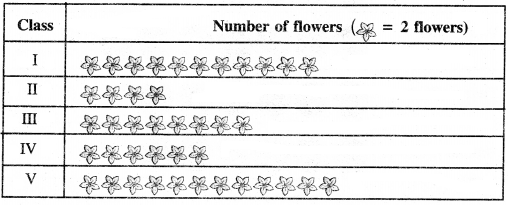
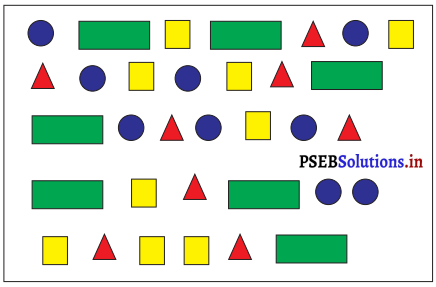

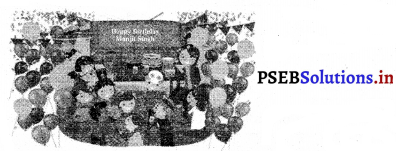
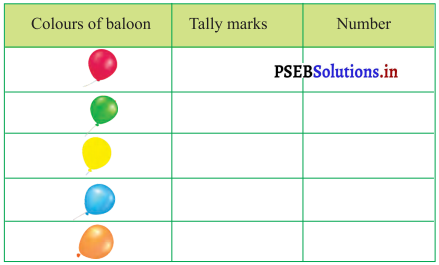
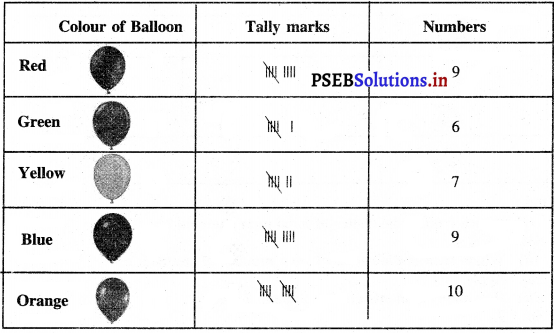
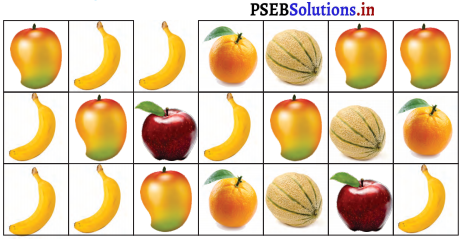
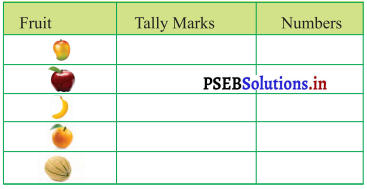

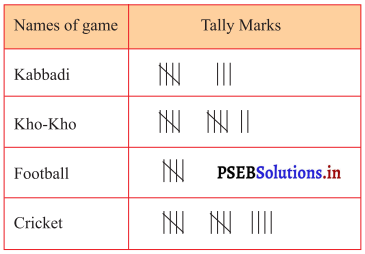
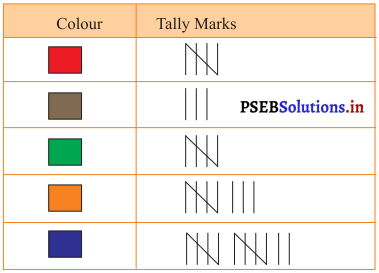
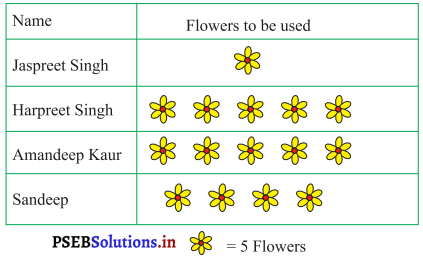

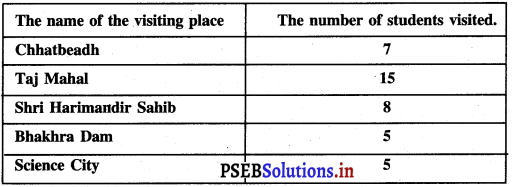
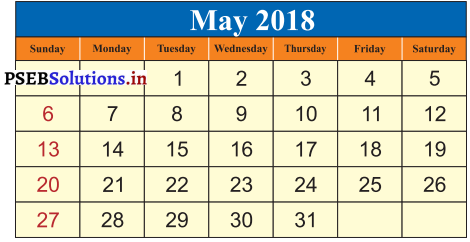

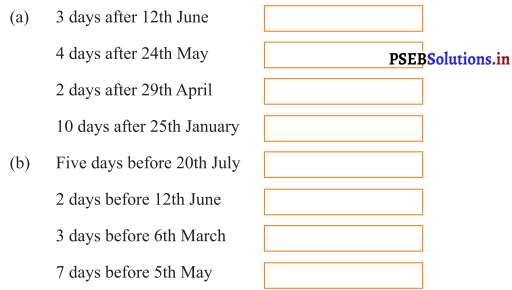







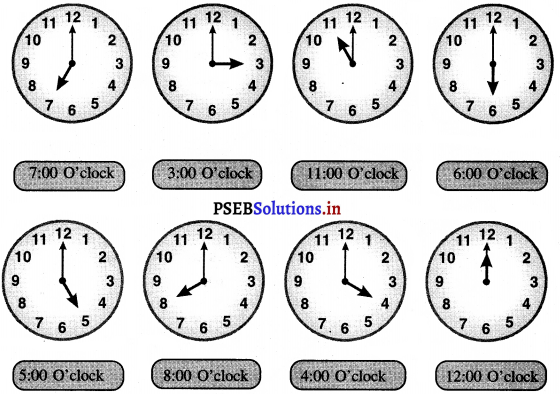


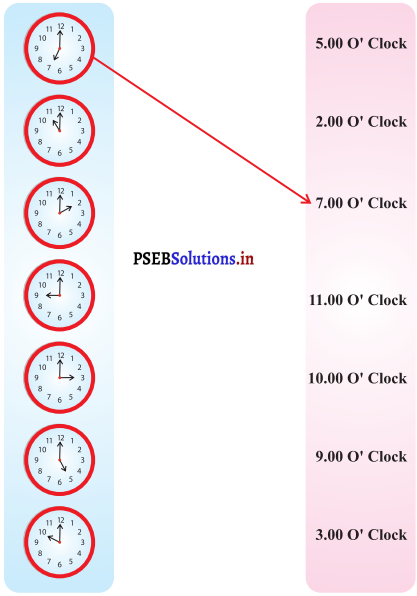
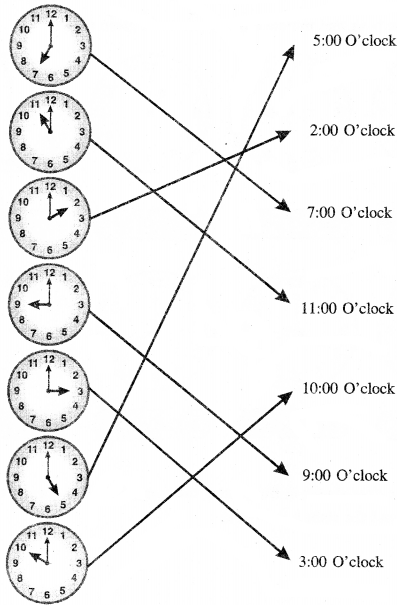
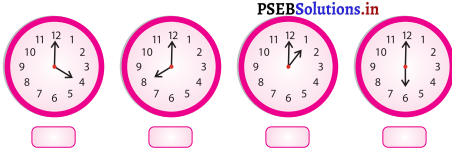
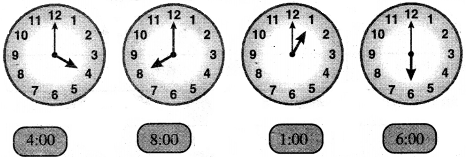



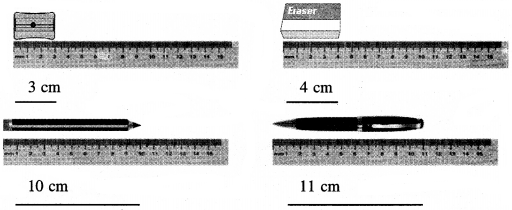
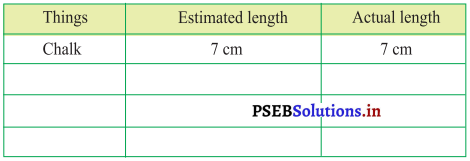



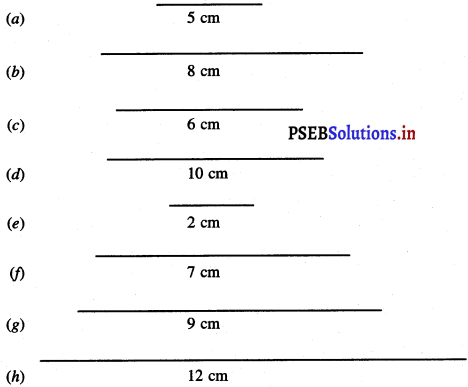
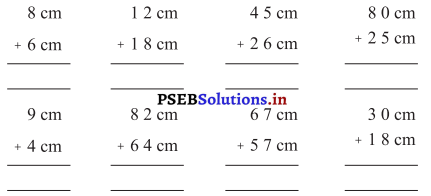
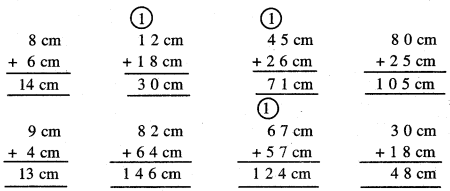
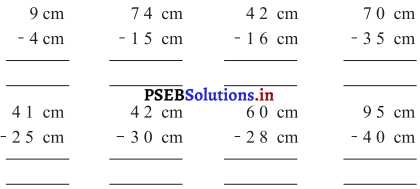
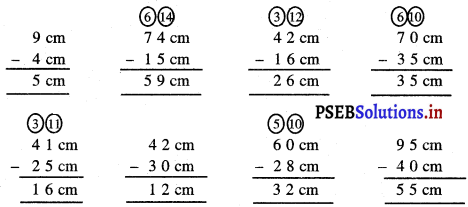







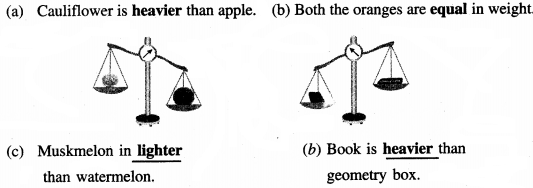



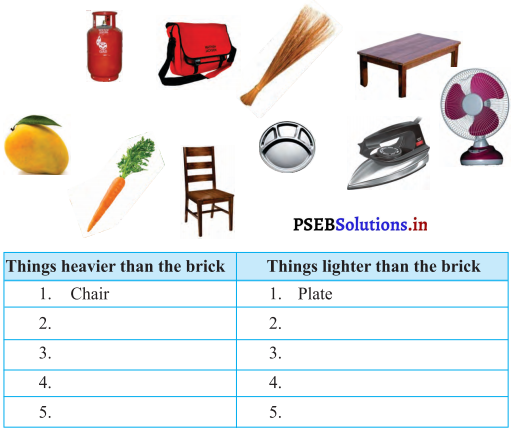







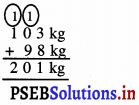


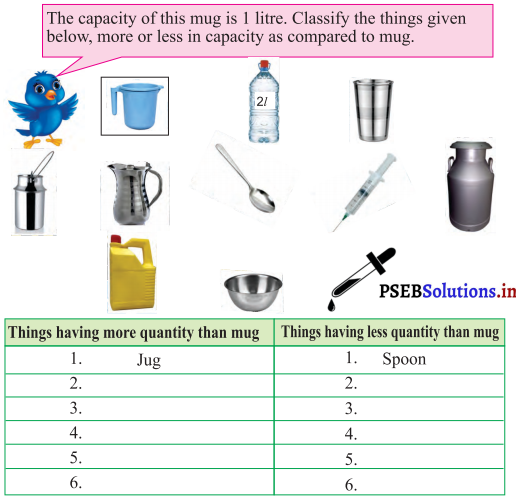

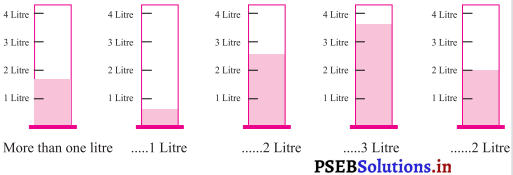
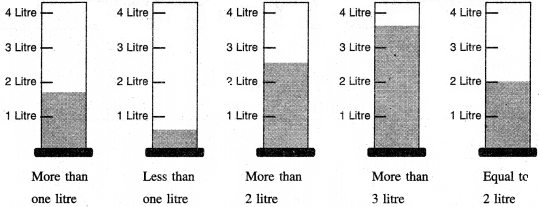
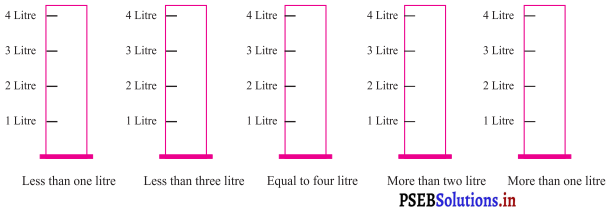
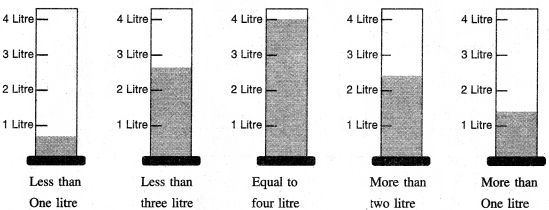
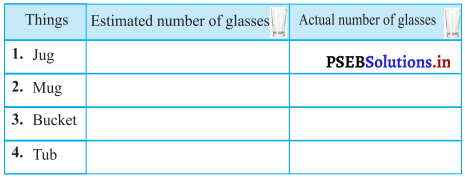
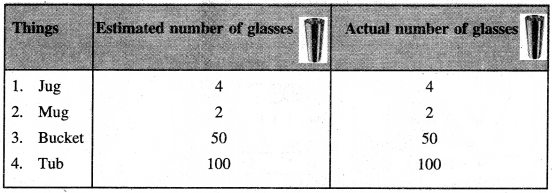
 .
.





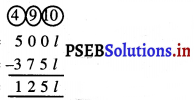
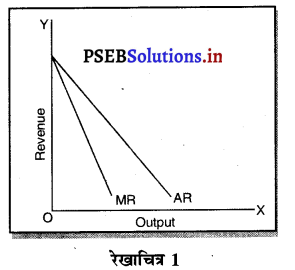
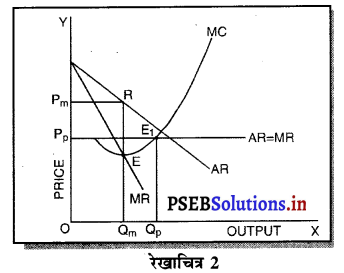

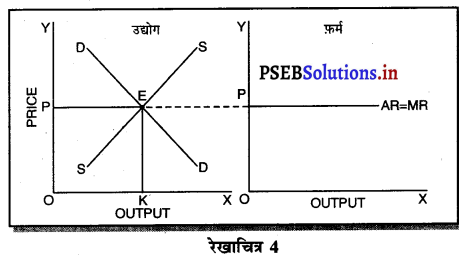
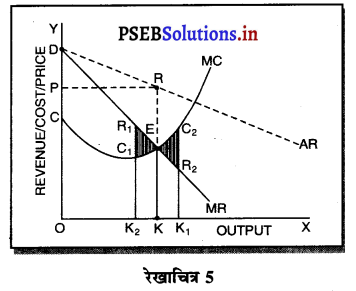
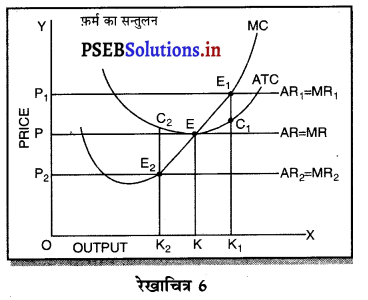
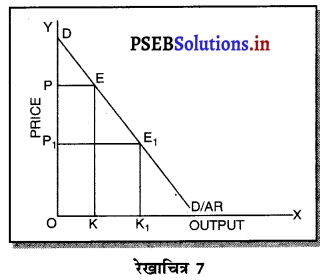
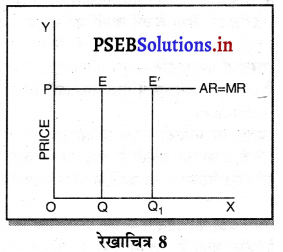
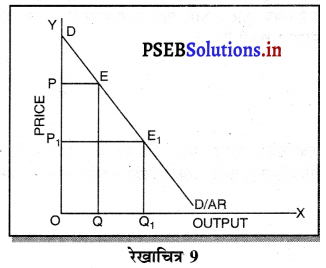
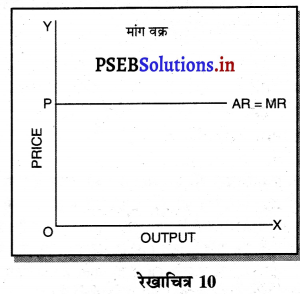
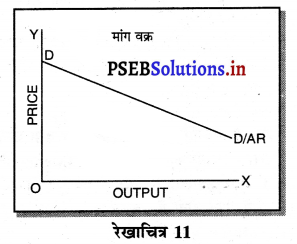 5. कीमत विभेद-पूर्ण प्रतियोगिता में कीमत विभेद सम्भव नहीं होता क्योंकि प्रत्येक फ़र्म एक समान कीमत निश्चित करती है। एकाधिकार में कीमत विभेद सम्भव होता है।
5. कीमत विभेद-पूर्ण प्रतियोगिता में कीमत विभेद सम्भव नहीं होता क्योंकि प्रत्येक फ़र्म एक समान कीमत निश्चित करती है। एकाधिकार में कीमत विभेद सम्भव होता है।